














ART OF TRANSFERRING TRUST - DAN CLARK PG. 28 & LARGE GROUP SURVEY PG. 20 SERVING CALIFORNIA’S LIFE/HEALTH PROFESSIONALS & FINANCIAL PLANNERS / OCTOBER 2022 WOMEN IN LEADERSHIP JESSICA WORD OF WORD & BROWN WRITES ON MENTORING PG 30












CALIFORNIA BROKER OCTOBER 2022 | 3 CaliforniaChoice 800.542.4218 calchoice.com | ChoiceBuilder 866.412.9254 choicebuilder.com A California Different way to do health care. CA
14
MEDICAL CRISIS? Make Sure Your Clients Have Tools to Communicate Their Wishes
BY PHIL CALHOUN
As a client advocate — from how to choose and use benefits to medical related planning — ensure you’ve helped prepare them for a health crisis.
16
YOUR HEALTH Resilience and Health: In response to life’s adversity, how effectively do you bounce back?
BY DR. MARK PETTUS
“. . . everything can be taken from a person but one thing: the last of the human freedoms . . . to choose one’s attitude in any given set of circumstances, to choose one’s own way.”
~Viktor Frankl
18
MENTAL HEALTH
‘Quiet Quitting’ Mental Health and the Role of Managers
DR. TYLER AMELL
Low levels of employee engagement = actively disengaged? Or quiet quitters?
20
SPOTLIGHT ON LARGE GROUP Industry Movers Share Insights
Read Expert Opinions from BenefitMall, Dickerson, Guardian, UnitedHealthcare and Word & Brown
28
Why Choose You?
The Art of Transferring Trust
BY DAN CLARK
High performance business coach and keynote speaker at the August IEAHU, OCAHU & SDAHU Medicare Senior Summit
32 COVER STORY
Women in Leadership
The Trick to Get More Women in the Industry? Mentoring
BY JESSICA WORD
34
TECHNOLOGY
Transform Your Agency from Laggard to Leader
6 critical tech platform features take you from zip to ZING!
BY DAVID MISORSKI
36
SALES
Why Selling the Low Hanging Fruit May Not Be Fruitful in the Long Run
BY JILL SELBY
38
BENEFITS Use Benefits to Counteract the Great Resignation
Retain and recruit with creative options
BY MICHAEL GIUSTI
4 | CALIFORNIA BROKER OCTOBER 2022 CalBrokerMag.com JULY 2021 2022 OCTOBER
SERVING CALIFORNIA’S HR, HEALTH/LIFE PROFESSIONALS & FINANCIAL PLANNERS
TABLE of CONTENTS
a partnership that pays
BONUS PROGRAM - COVERAGE EFFECTIVE:
JULY 1, 2022 TO JANUARY 1, 2023

Earn even more for offering your clients California’s most comprehensive access to doctors and hospitals:




Full Network PPOs*
• Blue Shield
• Health Net HMO offerings from*
• Blue Shield
• Kaiser Permanente
• Sharp Health Plan
NEW! CCSB offers 4-tier selection
Single bill Covers enrollments across all CCSB Carriers


Some Key Rules:
EARN EXTRA WHEN YOU SELL NEW SMALL GROUPS
Contact your local Covered California for Small Business sales representative to learn why we’re growing and how we can help build your business! An increasing number of agents and their clients are glad they did.
1. Applies to new to Covered California for Small Business (CCSB) groups with initial effective dates of 07/1/22, 08/1/22, 09/1/22, 10/1/22, 11/1/22, 12/1/22 and 1/1/23
2. Bonuses will be calculated on number of subscribers (employees) in e ect for the first e ective month of the policy as determined by CCSB.
3. No pro-ration of target values will take place.
4. Business written through partnering General Agencies qualifies.
5. Covered California intends to issue incentive payments forty-five (45) days following the ninety (90) day requirement outlined in Section D(1)(b) of Exhibit F. Covered California may modify its payment schedule at any time.
For a complete list of the program rules go to: http://www.coveredca.com/agents/become-an-agent-for-small-business/CCSB-agents/
Group Size (Enrolled Employees) Incentive Earned 51 - 100 $ 8,000 26 - 50 $ 4,000
- 25 $ 2,000
- 15 $
16
6
1,000
CoveredCA.com/ForSmallBusiness 844.332.8384
*Insurance companies vary by region and are subject to change.
PUBLISHER Health Broker Publishing, LLC publisher@calbrokermag.com
EDITOR Linda Hubbard Lalande editor@calbrokermag.com linda@calbrokermag.com
ASSOCIATE EDITOR Thora Madden Surveys Thora@calbrokermag.com
2022 INDUSTRY CONTRIBUTING EDITORS: Naama O. Pozniak, Louis Brownstone, Phil Calhoun, Dorothy Cociu, Lisa Rehburg and Maggie Stedt
ART DIRECTOR Randy Dunbar Randy@calbrokermag.com
VP MARKETING Devon Hunter Devon@calbrokermag.com
CIRCULATION calbrokermag@calbrokermag.com
EDITORIAL AND PRODUCTION: Editorial and Production Health Broker Publishing 14771 Plaza Drive Suite C Tustin, CA 92780 714-612-0306
calbrokermag@calbrokermag.com
Subscriptions and advertising rates, U.S. one year: $100. Send change of address notification at least 20 days prior to effective date; include old/new address to: Health Broker Publishing 14771 Plaza Drive Suite C • Tustin, CA 92780 714-612-0306
California Broker (ISSN #0883-6159) is published monthly. Periodicals Postage Rates Paid at Burbank, CA and additional entry offices (USPS #744-450). POSTMASTER: Send address changes to California Broker, 14771 Plaza Drive Suite C • Tustin, CA 92780
©2022 by Health Broker Publishing. All rights reserved. No part of this publication should be reproduced without consent of the publisher.

No responsibility will be assumed for unsolicited editorial contributions. Manuscripts or other material to be returned should be accompanied by a self-addressed stamped envelope adequate to return the material. The publishers of this magazine do not assume responsibility for statements made by their advertisers or contributors.
Printed and mailed by Southwest Offset Printing, Gardena, Calif.
OBSERVED
Majority Would Lie About Marijuana Use to Get Better Life Insurance Rates
BY MICHELLE MEGNA
42
GROUP BENEFIT TRENDS Individual Coverage HRAs, the rise of remote workers, and “The Kaiser Effect”
Learn about an alternative benefits model based on reimbursing employees for health insurance instead of buying it for them.
BY SARAH YI
6 | CALIFORNIA BROKER OCTOBER 2022 CalBrokerMag.com IN EVERY ISSUE Industry News 9 Classified Advertising 46 Ad Index 46
40
When a lender provides capital to a business, proof of disability insurance on the borrower is often required. The Business Loan Indemnification DI Plan continues loan repayment to a lender, should a borrower become sick or injured. And unlike overhead expense plans, the Loan DI Plan covers the loan principal as well as the interest.




























Business Loan Indemnification DI (800) 345-8816 F www.piu.org F piu@piu.org Petersen International Underwriters


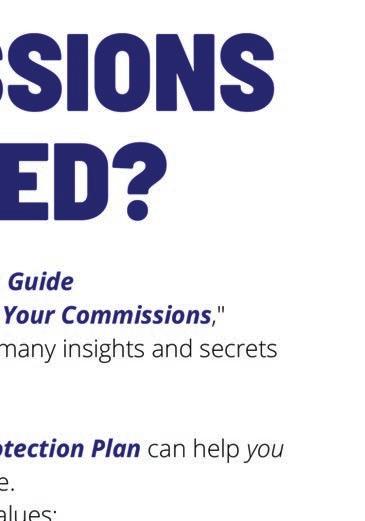
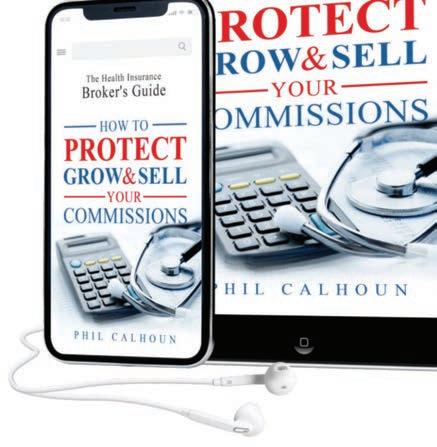







THINGS EMPLOYERS SHOULD DO NOW THAT ROE HAS FALLEN

In upholding a Mississippi abortion ban and overturning precedent establishing a constitutional right to abortion, the high court’s decision (www. law360.com/articles/1446063)
in Dobbs v. Jackson Women’s Health allowed states to impose restrictions or outright bans on the procedure. That’s quickly creating new liabilities for employers related to workers’ health, discrimination protections, privacy and speech. Recommendations:
• Note Your Own Reaction
• Check the State Laws
Two COVID-19 Vaccines
COVID-19 Update: FDA Authorizes Two COVID-19 Vaccines for Use as Booster Dose
The Moderna COVID-19 Vaccine, Bivalent, is authorized for use as a single booster dose in individuals 18 years of age and older. The Pfizer-BioNTech COVID-19 Vaccine, Bivalent, is authorized for use as a single booster dose in individuals 12 years of age and older.
Both kinds of booster shots will provide “better protection against COVID-19 caused by the omicron variant,” the FDA announcement stated.
“The BA.4 and BA.5 lineages of the omicron variant are currently causing most cases of COVID-19 in the U.S. and are predicted to circulate this fall and winter,” the FDA said.
• Review Your Policies
• Check Employee Reactions
• Prepare for Legal Challenges
For example: The law might be used to target employers providing workers reimbursement to travel to a jurisdiction where the procedure is legal, which has quickly become a popular option companies are considering to preserve the benefit in states with bans. As a result, “every employer’s risk tolerance on this is going to be different, and every employer is going to have different business considerations they need to take into account.”
Read more: https://bit.ly/3RwePJq
CMS grants $98.9M to health insurance exchange navigators
Health insurance exchange navigators will receive $98.9 million in grants from CMS for the 2023 HealthCare.gov open enrollment period — the largest ever. This historic investment builds on Biden-Harris commitment to enroll more people in healthcare coverage. These outreach and enrollment efforts helped contribute to the record-breaking 14.5 million people who signed up for 2022 health care coverage through the Marketplaces, including nearly 6 million people who newly gained coverage.
“We’re doubling down on our efforts to ensure people get the insurance they need,” said HHS Secretary Xavier Becerra. “Navigators critically help us reach people where they are, educating them on their health insurance options that can be lifesaving.”
OCTOBER 2022 CALIFORNIA BROKER | 9 CalBrokerMag.com
/NEWS CURATED NEWS FROM THE INDUSTRY
INDUSTRY
INDUSTRY/NEWS
ONE IN THREE MORE LIKELY TO BUY LIFE INSURANCE
LIMRA found that between 2020 and 2021, 1 and 3 Americans said they were more likely to purchase life insurance because of the pandemic. Additionally, since the pandemic there have been pivots improving the underwriting process of policies, to better meet the needs of potential policyholders and expedite the overall process.
Phrases That Make Clients Feel Important
1. I will handle your account personally.
2. What are your goals?
3. You’ve probably seen the recent market volatility.
4. I saw something you should see.
5. I met an expert and asked a question on your behalf.
6. Happy birthday!
Custom Media Digital Health Free Webinar “Accelerating Healthcare’s Digital Evolution: A roadmap to Enterprise Intelligence”
Oct. 4, 11:00 a.m. - 12:00 p.m. PST
https://bit.ly/3LqQ7Yt
National African-American Insurance Association (NAAIA) 2022 Annual Conference & Empowerment Summit
Oct. 5-7, Baltimore, MD.
www.naaia.org/conference
Self Insurance Institute of America (SIIA) ENGAGE National Conference & Expo
Oct. 9-11, Phoenix. Info: (800) 851-7789
www.siiaconferences.org
Life Insurance Marketing and Research Association (LIMRA) 2022 Annual Conference
Chicago, Oct. 16 – 18. www.naaia.org/conference
HLTH 2022 Health Innovation Expo
Nov. 13-16, Las Vegas. www.hlth.com/2022event/register
Ellevate Women’s Leadership 2023 Summit
March 13-15, 2023. Las Vegas.
Registration NOW OPEN. Don’t miss it!
https://bit.ly/3QRJr6H
7. I got something for you.
8. How did your mom’s surgery go?
9. I hope you can attend.
10. Would you like to come over for dinner?
11. You are an important client.
10 Ways to Be Politely Persistent
1. Communicate regularly.
2. Keep it simple.
3. Always bring something new and valuable.
4. Engage with them.
5. Be where they are (virtually).
6. Be where they are (physically).
7. Remember the rule of six.
8. Share success stories.
9. The phone message strategy.
10. Let them know what you want.
10 | CALIFORNIA BROKER OCTOBER 2022 CalBrokerMag.com
High turnover rate of insurance CSR
• 30-45% - the rate of insurance Customer Service Rep (CSR) contact center turnover — more than double the average for all other occupations. Insurance companies are especially vulnerable to this because insurance products are complex and require skilled selling with access to data and information to respond to customer needs quickly and effectively.
• 6-9 months salary - the cost to recruit, on board and train new CSRs

• 6 months - time it takes for CSR to provide optimal customer service
Trend 1. Insurers using leading-edge tech are growing the fastest. Insurance firms are leaning on data-driven insights from AI, big data, application programming interfaces, and digitalization to help facilitate customers’ digital journeys.
Trend 2. The industry continues to suffer from rising CSR burnout and quit rates. Contact centers have some of the highest turnover rates in the country, ranging between 3045%, more than double the average for all other occupations.
48% increase in behavioral health providers
Health insurance providers expanded behavioral health access

In response to the growing need for mental health treatment, the number of in-network behavioral health providers increased by 48% in the last three years among commercial health plans, says AHIP's recent survey. The number of in-network inpatient psychiatric hospitals rose by 40%. A majority of health plan respondents to the AHIP survey, or 78%, said they also increased reimbursement rates for behavioral health providers.
Insurance companies are especially vulnerable to this because insurance products are complex and require skilled selling with access to data and information to respond to customer needs quickly and effectively.


Trend 3. Insurers are partnering in growing numbers with InsurTech to transform their CX approach.The goal is to not only grow market share, but to unburden and improve the work environment for their teams of CSRs and agents. Balancing automation with the need to maintain a human touch with customers is more important than ever.
Trend 4. The growth of InsurTech doubled from 2020 to 2021.1 InsurTech firms raised a record $15.4 billion in funding in 2021—nearly double 2020’s levels, according to CB Insights. Leveraging AI-based platforms to boost the effectiveness and efficiency of critical functions has become a strategic imperative.
https://www.zelros.com/2022/06/29/45-csr-agent-turnoverrate-what-is-the-insurance-industry-missing/
Easier access for you and your clients
Being the largest physician-led healthcare network in SoCal has its advantages. We contract with thousands of doctors and hundreds of hospitals and urgent care centers to give our members the best options to manage their health. And with our exclusive broker portal, it has never been simpler to find exactly what your clients need.
For more information and to sign up, please visit our dedicated broker portal at Brokers.RegalMed.com.
OCTOBER 2022 CALIFORNIA BROKER | 11 CalBrokerMag.com FASTEST, EASIEST, MOST TRUSTED. BenefitMall.com 800.350.0500
22RLANSMR411EN02
77.0 to 76.1 years - the amount of time U.S. life expectancy fell again in 2021, largely due to COVID-19
Life expectancy at birth in the United States declined nearly a year from 2020 to 2021, according to new provisional data from the CDC’s National Center for Health Statistics (NCHS). That decline – 77.0 to 76.1 years –took U.S. life expectancy at birth to its lowest level since 1996. Read more.
27 minutes and 15 milesaverage U.S. commute before pandemic

Care about being green? Don’t make workers come to the office every day
of 2,023 Americans willing to pay more for better-quality health care
Many Americans would pay more for higher quality care
Care quality was the only area in which a majority said they would be willing to pay more.
A survey commissioned by revenue cycle firm AKASA showed:
• 57% of 2,023 Americans are willing to pay more for betterquality health care
• 47% are willing to spend more for the ability to receive care from their chosen health care provider
• 41% would spend more for convenience or proximity.
• 51% of respondents would travel 10 to 20 miles to get reasonable health care prices
Does the push to remote work just shift the burden of energy use from the office to the home? There’s a stronger case that the opposite is true. It’s not a simple trade off of using energy at home, versus using energy at the office.
Keeping workers off the road, using less gas and emitting less pollution is a definite plus for the environment. Given the fact that the average U.S. driving commute time was 27 minutes and around 15 miles right before the pandemic hit, and that the average vehicle emits about 404 grams of CO2 per mile, even a small or partial reduction in everyday commuting will make a substantial dent in carbon emissions.
Instead of a place we go to everyday out of habit or because we must, the office is becoming a place we go to collaborate, to meet clients, and to get to know our colleagues. In many places, the office is changing to something more resembling a European cafe.
One statistic shows that if employees split their time 50/50 between the office and the home, it would be the greenhouse gas equivalent of taking the entire New York State workforce off the road.
Benefits of remote work? Less time commuting, more time for ourselves and our families, and more flexibility in general. We’ve proven that we can be every bit as productive this way, and a recent Condeco study shows that the vast majority of us like this arrangement, and want it to continue.
Read more: https://bit.ly/3eCPxdL
12 | CALIFORNIA BROKER OCTOBER 2022 CalBrokerMag.com
INDUSTRY/NEWS
Mindfulness Meditation Plays Important Role in Healthcare

Clinicians used to wonder if there was a role for mindfulness meditation in healthcare. But after the Covid-19 pandemic laid bare the overwhelming need for practical solutions in behavioral health, the question has shifted to what role it can play.

An article from American Physical Therapy Association, citing the American Mindfulness Research Association, describes mindfulness as the practice of remembering to observe moment-to-moment experiences with openness and without automatic patterns of previously conditioned thoughts, emotions or behaviors.


“Mindfulness means present-moment awareness and offers you a constructive, practical and effective way to observe your physical, cognitive and emotional reactions and make skillful choices that can decrease your pain and distress. Remember you may not have control over the sensation of pain, but you do have control over your reactions to the sensation of pain. Your choices directly impact your nervous system activity.”

OCTOBER 2022 CALIFORNIA BROKER | 13 CalBrokerMag.com
Make Sure Your Clients Have Tools to Communicate Their Wishes
BY PHIL CALHOUN
Open enrollment is about to arrive and health insurance professionals report this time of year is their busiest. The reward of doing this work well is that clients are happy, and they remain loyal. The financial reward is renewal commissions along with the satisfaction that a job is well done.
Annual open enrollment is also the perfect opportunity to consider offering important education about health-related planning for your clients. As a client advocate, you join an advisor team for your clients and play a key role communicating health insurance topics — from how to use benefits to medical related planning your clients need.
The medical planning notices you can provide to your clients will benefit them through some of the most difficult health challenges they could face. Not everyone has completed forms to communicate how they want their medical care to be managed.
No one likes to think about it, but serious accidents and illnesses happen every day.
Health insurance professionals are in a perfect position to take the lead to educate clients about advanced directives as well as how to handle other critical medical and financial decisions. This process is significant. Planning for the impact of serious illness or accident can be accomplished with a few forms. As a health advocate, opening this conversation with clients helps them plan. You can encourage your clients to include family and friends to manage critical life planning steps. It is not difficult to provide handouts and a few simple legal forms to clients during open enrollment. Most clients will appreciate the information and recognize your concern for them is genuine. File this effort under doing good works for your clients.
If you decide to hand out this information and explain how these forms can provide their family with directions when needed most, it is your decision. The forms come with directions on how to complete and what to do with them — such as placing them in one’s will and trust documents with other important medical and financial information. Providing this information is one step; I don’t suggest you assist people with completing the forms unless you have a law degree.
These forms will enable your clients to place key decisions in the hands of those they trust the most. Not only are the forms helpful in addressing medical and financial considerations but they remove the burden and uncertainty of how someone wants their life decisions to be handled.
So, the recommendation is to provide access to the following documents only. Share information on how to obtain these official California documents. All the details are outlined on the
forms and are self-explanatory. Should you have clients who need assistance, there are resources available including local health care providers.
■ An Advance Health Care Directive, also called a “living will.” This document lets you state your wishes for health care if you become incapacitated. You name a trusted person who will work with health care providers to be sure you get the kind of care you want. https://oag.ca.gov/sites/all/files/agweb/pdfs/ consumers/ProbateCodeAdvancedHealthCareDirectiveFormfillable.pdf
■ A Durable Power of Attorney for Finances to appoint the person of your choice to manage your finances for you if you no longer can. https://freeforms.com/poa/ca/californiadurable-financial-power-of-attorney-form/
■ Do Not Resuscitate (DNR) forms, which alert emergency medical personnel not to administer extreme life-saving measures. If you wish to obtain a DNR form, you should contact the CMA publications office directly, at 1(800) 8821262 or the California Medical Association website: https:// www.cmadocs.org
■ Physician Orders for Life-Sustaining Treatment (POLST) forms. https://emsa.ca.gov/dnr_and_polst_forms/
Publisher’s Note: None of the information in this article is to be used or construed as legal advice. The information is to be considered as an option to share with clients. If you would like to learn more or access these documents, do your own online search, contact your local law office, or use the links listed above.
PHIL CALHOUN consults with health insurance professionals on commission protection and exit planning. He is the coowner of Integrity Advisors and publisher of Cal Broker Magazine. Calhoun is driven to help active health insurance professionals access the resources needed to be an advocate for their clients.
To learn more, go to www.commission.solutions or call 714664-0311

14 | CALIFORNIA BROKER OCTOBER 2022 CalBrokerMag.com MEDICAL CRISIS
THE JOURNEY OF A THOUSAND MILES BEGINS WITH THE RIGHT HEALTH INSURANCE.



When your clients are traveling abroad, whether for a long stay or a short visit, protect them with GeoBlue® travel health insurance. They’ll be able to choose from the most complete set of bene ts and services in the industry, including medically necessary COVID-19 coverage.


GeoBlue single trip and expatriate plans also include crucial bene ts such as medical evacuation, access to a trusted provider network, direct pay for care, 24/7 support and peace of mind.














Learn more and register for your Agent ID at geobluetravelinsurance.com, contact us toll-free at 1-844-669-8743 or email us at partnerprogram@geo-blue.com.

All
exclusions and limitations. We recommend you consult the policy for coverage and benefit details. GeoBlue is the trade
of Worldwide Insurance Services, LLC (Worldwide Services Insurance Agency, LLC in California and New York), an independent licensee of the Blue Cross and Blue Shield
GeoBlue is the administrator of coverage provided under insurance policies issued by 4 Ever Life International Limited, Bermuda, an independent
the Blue Cross Blue Shield Association. INDV2249-BRK-9/22
insurance policies and group benefit plans contain
name
Association.
licensee of
Resilience and Health: In response to life’s adversity, how effectively do you bounce back?
 BY DR. MARK PETTUS, MD
BY DR. MARK PETTUS, MD
“. . . everything can be taken from a person but one thing: the last of the human freedoms . . . to choose one’s attitude in any given set of circumstances, to choose one’s own way.”
— Viktor Frankl
As certain as taxes and death, we can anticipate adversity in our lives. The pandemic has reinforced that thought, unfortunately. No one is sheltered from the vulnerability of being human. Resilience is the process of adapting well in the face of such adversity. When it comes to health, quality of life and longevity, a person’s capacity for resilience is where the rubber meets the road.
Research has shown that resilience is ordinary, not extraordinary, meaning that people commonly demonstrate the capacity for resilience. This has been my own experience, that of family and friends, and the experience of many of my patients and their families as we confront major setbacks in our lives. We all experience pain and adversity in our lives e.g. losing a loved one, confronting illness and diminished quality of life, traumatic events, divorce, etc. We also experience a host of less traumatic setbacks in our lives such as losing a job or promotion, struggling to make ends meet financially, maintaining our relationships, and dealing with health issues. Of course each one of these is relative and all about the context of what else is happening in our lives and how we are coping.
How we “bounce back” in response to the difficult experiences in our lives is what resilience is all about. So why is it that some people just seem to cope better in response to life’s obstacles? Is resilience a trait you’re born with? Can resilience
be cultivated? What do we currently understand about the nature and nurture contribution in connection to the capacity for resilience? What do we understand about the biological underpinnings that distinguish vulnerability from resilience? Lastly, can resilience be taught, and if so, what are some paths to getting there?
Evidence suggests that children begin to learn and develop resiliency skills at a young age. Emmy Werner, a professor of human development at the University of California at Davis, has researched resilience in children and found that the strength of the parental bond, particularly in those pre-K years, is a crucial determinant of effective adult adaptation.
Developing capacity around a particular strength like reading or drawing assists children with a foundation to build upon and to fall back on when confronting increased stress. Belief in something one can reach for that has personal meaning attached, e.g., “becoming a dancer or an architect one day” or connection to sources of meaning and purpose e.g. one’s spirituality, can serve as a rudder when the water gets choppy and the winds unpredictable. Improved health outcomes are more often seen in such individuals.
Not surprisingly, emotional trauma, childhood and adult experiences of violence and abuse, lack of education, and dysfunctional non-loving relationships weaken resilience capacity. Poor health outcomes predictably emerge from such a place.
The abundance of available research that informs our understanding of resilience using tools to measure resilience capacity, the relationship between resilience capacity and health
16 | CALIFORNIA BROKER OCTOBER 2022 CalBrokerMag.com YOUR HEALTH
outcomes, and the human attributes that are most consistently associated with resilience demonstrates the following:
Relationships are a critical dimension woven throughout the fabric of a resilient individual’s life. Having caring and supportive relationships at home, work and play is an important factor. Relationships defined by love, trust, encouragement and support foster an individual’s capacity for resilience.
Meaning matters. Much has been said about the healing potential unleashed with purposeful pursuit of meaning in love, work and play. Individuals who identify and develop such areas in their lives naturally cultivate a lush garden of personal meaning to fall back on as a source of strength and optimism. These characteristics are essential in the development of resilience. In the same way, values like friendship and academic and athletic skills become motivators with the reward in the satisfaction of those values. For resilient individuals, sources of meaning and personal strength serve as a beacon guiding them through the most challenging storms.
Resilience research suggests the following strengths as critical to the capacity to bounce back from adversity: Self-awareness. Individuals who demonstrate greater capacity for resilience in their lives have developed a strong sense of who they are and greater confidence in their strengths and abilities. Kids, for example, who find something they can do better than anyone else are more likely to transcend obstacles in life. Adults who can “gut check” are better able to link behavioral choices with consequences, are more mindful of their inner compass, and are more likely to bounce back. Developing a sense of self-worth is a vital dimension to this perceptual awareness.
Emotional Management: Resilience requires the skills and capacity to manage strong feelings and impulses. I’ve been strongly influenced in my own “resilience development” endeavors by the work of Daniel Goleman and others in the field of emotional intelligence. These critical competencies are skills that enable resilience in every aspect of life. In addition to self-awareness, self-management competencies are very important. Goleman elaborates on skill development in areas of:
•Emotional self-control — keeping disruptive impulses under control
•Transparency — displaying honesty and trustworthiness
•Adaptability— easily adjusting to changing conditions
•Initiative — readiness to mobilize the courage to act and seize opportunities
•Achievement — the desire to satisfy values
•Optimism — developing positive perceptual frames for examining circumstances.
Selfless Acts: Children and adults who are more likely to rebound have had experiences of helping others in need. Serving others enhances one’s capacity when confronting a crisis to better serve oneself. Our own experiences are placed in a broader context when we’re aware of the needs of others and that we’re not alone in our vulnerability. Virtues of generosity, gratitude, empathy, forgiveness and altruism are commonly seen in people who exemplify resilience.
Skills in Communication and Problem Solving:
Awareness and communication of needs, beliefs and expectations are necessary skills as you navigate your lifeboat of resilience through choppy seas. Developing skills in conflict management and problem solving add substantial buoyancy to the vessel you’re navigating. Many of the setbacks we confront in our lives center on interpersonal conflict. The stakes are often high with respect to the quality of our lives. Resilient individuals understand that survival, at some level, requires preservation of vital relationships and an ability to communicate and work through differences.
Good Health: Individuals who enjoy better health are more likely to bounce back from adversity. While good health alone is not a guarantee for resilience, individuals with poor health are more likely to be rendered vulnerable in response to stressful setbacks. You’ll also note that the characteristics that form a foundation for resilience are, in themselves, health promoting!

The evidence is clear, as is true for virtually all aspects of our lives — work, home and community. Resilience capacity is less likely to be something we are born with and more likely something we nurture and develop throughout our lives. Acts of resilience are not rare at all. Humans are in fact designed for resilience. And even when the obstacles may seem insurmountable, as Victor Frankl reminds us — there are some things that cannot be taken from us — “the last of the human freedoms … to choose one’s own way.”
DR. MARK PETTUS, MD, FACP, ABOIM, is the chief medical officer at Preventia. He is a triple-board certified internist, nephrologist and integrative medicine physician practicing for over 25 years. He received his M.D. from the University of Massachusetts Medical School with postdoctoral training from Harvard Medical School. He previously served as the director of Medical Education, Wellness and Population Health at Berkshire Health Systems in Western Massachusetts. In addition, he served as the associate dean of Medical Education at the University of Massachusetts Medical School. Dr. Pettus is the physician lead on population health initiatives for Western Massachusetts and currently serves as president of the National Wellness Institute Board of Directors. He is the author of two books, “The Savvy Patient: The Ultimate Advocate for Quality Health Care” and “It’s All in Your Head: Change Your Mind, Change Your Health.” Dr. Pettus has appeared on numerous TV and radio venues nationally including the 700 Club, Good Morning America, NPR and PBS. His podcast,“The Health Edge” is heard by people all over the world.
Contact: mpettus@preventiagroup.com www.preventiagroup.com
OCTOBER 2022 CALIFORNIA BROKER | 17 CalBrokerMag.com
Quiet Quitting
Mental Health and the Role of Managers
BY DR. TYLER AMELL
According to recent research published by Gallup, there is significant overlap between low levels of employee engagement, including those actively disengaged and those classified as being “quiet quitters” in the U.S. workforce. (https://bit. ly/3Bts1ZD) This is an issue brokers, employers and human resources professionals must address in the near term, given its importance and impact on organizational success metrics such as profitability, revenue retention and customer satisfaction.
Employee engagement
Employee engagement is the strength of the bond or connection between people and the work they do, as well as between their teams and ultimately the organization. It can go above “discretionary effort.” It can be emotional and cognitive in nature, underscored by a sense of belonging and purpose. I have the privilege of traveling often on business, usually to speak at conferences or meet with employers. I check in and out of plenty of hotels, and I can easily tell which host agent is engaged and which is not within a short period. Employee engagement is currently at about 32%, with 18% actively disengaged, using recent Gallup data. These are not strong numbers compared to the nearly 10 years of increasing engagement levels recently reported on. During this time frame, active disengagement decreased as well, until very recently.
Quiet Qui ing
“Quiet quitting” is the phenomenon of people not necessarily going above or beyond at work, and ‘only’ meeting the work details and deliverables outlined in their job descriptions. Using very recent Gallup data, over 50% of the U.S. workforce is currently made up of “quiet quitters.” The concept is receiving a lot of attention in the media. From my perspective, you can certainly have engaged people who are meeting, or even exceeding in performance measures, all while ‘only’ meeting the deliverables set out in their job descriptions. Brokers and employers should ask if it is a time commitment issue. Is the expectation that people work 24-7, even while on PTO? Is it a resource or skill issue? What about apathy? Inflation? And even whether “quiet quitting” should be an issue at all, since
people are compensated through salary and benefits for meeting their job requirements, not necessarily for going above that level. This is traditionally what the individual bonus element of compensation is for, isn’t it? Labeling these people as “quitters” when most are certainly not, may foster a negative workplace culture and lead to the turnover and other negative issues employers should be trying to avoid. When you add in the concept of worker-wellbeing, which is an issue correlated with engagement and “quiet quitting” itself, the problem becomes compounded and not easily solved.
Mental health at work
Along with these issues, mental health concerns in the workplace have been steadily increasing, particularly in the years leading up to the pandemic period and have accelerated significantly during the first two and a half years of the pandemic. Current estimates are that between 55-59% of people are impacted by work-related stress alone, according to data from the American Psychological Association. Similarly, 87% of employees believe that actions from their employer would improve their mental health. From a condition perspective, nearly 20% of people are now impacted by anxiety disorders annually, and over 1 in 3 people are impacted by depression in the U.S. These conditions invariably have an impact on people from a work life and home life perspective. It is very difficult to separate work and home life, particularly in a hybrid work environment.
The role of managers
Brokers, employers and human resources professionals have been looking at mental health solutions to better support their clients’ people for years. There are a plethora of point solutions, digital offerings and integrated wellbeing platforms that can help. One avenue which can have a significant impact — but does not garner as much attention because it involves difficult leadership decisions — is the role that managers themselves play. Acclaimed author and researcher Marcus Buckingham once noted that people leave managers, not companies. Therefore, if poor management can lead to lower employee engagement, more ‘quiet quitters’ and poorer mental health, then better management can certainly result in the opposite.
18 | CALIFORNIA BROKER OCTOBER 2022 CalBrokerMag.com
MENTAL HEALTH
1. Promote mental health at work
● Involveemployees
● Informemployees
● Consultemployees
● Encouragetheinitiativesofemployees
● Bearolemodel
2. Show appreciation for the efforts of employees
● Thankemployees
● Rewardthebehaviorsofemployees
3. Give decisional latitude to employees
● Setexpectations
● Giveroomformistakes
● Allowleeway
● Respectthelimitsofemployees
A study published last year by the “International Journal of Human Resources Management” provides insight into how managers can promote improved mental health at work for their people. Managers should be concerned about mental health, and exhibit behaviors that reflect this concern in order to be more effective.

Similarly, there are behaviors and dialogue that can transcend mental health issues and help address employee engagement and the ‘quiet quitting’ phenomena. The following strategies are recommended, based in part upon the work of Jim Harter at Gallup and others:
Culture Eats Strategy for Breakfast: Know what your culture is, and continuously review it. Ensure the culture leadership wants permeates all aspects of the organization. The best strategy can be obfuscated by culture before it even gets off the ground.
Manager Engagement: According to Gallup, only 1 in 3 managers are engaged at work themselves, so this is a good place to start in order to address systemic problems.
Role Transparency: Many people have a hard time seeing how their roles and tasks fit in the big picture of what the organization’s larger purpose is. Addressing this helps drive a sense of belonging and supports a positive culture.
Collaboration and Dialogue: Listening to, understanding, and involving employees in decisions is critical. For example, where and when do people work? Do they have a voice in whether it is a hybrid environment, versus fully onsite or fully remote? A simple method is for managers to have a meaningful conversation with each of their people weekly, for at least 15 minutes. One of the best leaders I had in my career would make time a couple of mornings a week to visit and just chat. We came up with our best workplace health and disability management ideas during these chats.
4. Offer support to employees
● Providemeanstoadoptbehaviors
● Referemployeestoresources
5. Foster dialogue
● Promotedialoguebetweenemployeesandmanagers
● Beavailable
● Beopen
● Checkonemployees
● Listentotheneedsofemployees
● Raise the awarenessofmental health at work among employees
● Promotedialoguebetweenemployees
● Provideaccesstophysicalplacesforinformal exchanges
● Encourageteamcohesion
● Organizesocialactivities
Watch for Rust Out, Burnout and Disengagement: Know where your people are at the moment from a mental health perspective. Are they thriving? Struggling? What are the major things going in their life that could be of relevance to the workplace?
Treat Employees Like People: I try to make a conscious effort to refer to people that are part of an organization, not as workers or employees, or even contractors, but as people first. If you are a leader, looking at things through the lens of others will dramatically improve your own perspectives.
Together, these approaches can help brokers and the organizations they support address mental health, employee engagement and perhaps even rethink the ‘quiet quitting’ concept.
DR. TYLER AMELL is chief health & strategy officer at MediKeeper and an internationally recognized thought leader on the topic of workplace health and productivity. He also serves on the executive board of the National Wellness Institute and the Work Wellness Institute. In the past, he served on the executive board of the Integrated Benefits Institute (IBI) and the Canadian Association for Research on Work and Health. He was a past partner and vice president at a global HR Consulting and Technology company, CEO of a HR technology company and vice president of Canada’s largest independent health care, occupational rehabilitation, and return-to-work company. Amell holds an adjunct faculty position at Pacific Coast University for Workplace Health Sciences. He has given seminars and presentations at more than 250 events globally. Contact: www.medikeeper.com
OCTOBER 2022 CALIFORNIA BROKER | 19 CalBrokerMag.com
HERE ARE FIVE EXAMPLES OF MANAGEMENT BEHAVIOR THAT CAN INFLUENCE THE WORK ENVIRONMENT
SIX EXPERTS WEIGHT IN ON LARGE GROUP TRENDS
20 CALIFORNIA BROKER OCTOBER 2022 CalBrokerMag.com
SPOTLIGHT ON LARGE GROUP
CalBroker Magazine (CB): How has the pandemic impacted large group health in California?


Brian Sullivan, market director for California, BenefitMall:
COVID-19 has upended American life and resulted in nearly 91 million cases and over one million deaths, according to the Centers for Disease Control and Prevention.
There aren’t many positives that have come out of the pandemic, but one favorable result is that COVID-19 forced Americans to think about the time when they will no longer be here.
COVID-19 leads to more wills
A recent Forbes Advisor survey found that 64% of people who made out wills said they did so because of COVID-19. That is especially true for younger adults. More than 70% of people between the ages of 18 and 41 said COVID-19 inspired them to make out a will.
Overall, we’re starting to see the impact of the pandemic in Q4 and Q1 trends and renewals. During the pandemic, we saw many employers temporarily close their doors or severely reduce their staff, which directly impacted which group segmenttheyqualifiedfor, depending on the length of time the group was under duress. While navigating the appropriate segment size, these groups also temporarily enjoyed lower premiums with higher claims, leading to higher renewal costs on their anniversaries. While there were some outliers, 2020 and 2021 renewals for the most part renewed in the single-digit area. In 2022, we are seeing the trend roll up.
While COVID-19 led people to create a will, there are other reasons that would prompt those without a will to put one in place. Survey respondents said having a child (22%) is the most common reason, followed by having savings and/or other assets (18%) and getting married (17%).
● Nearlyone-third(30%)of respondents said they don’t have money
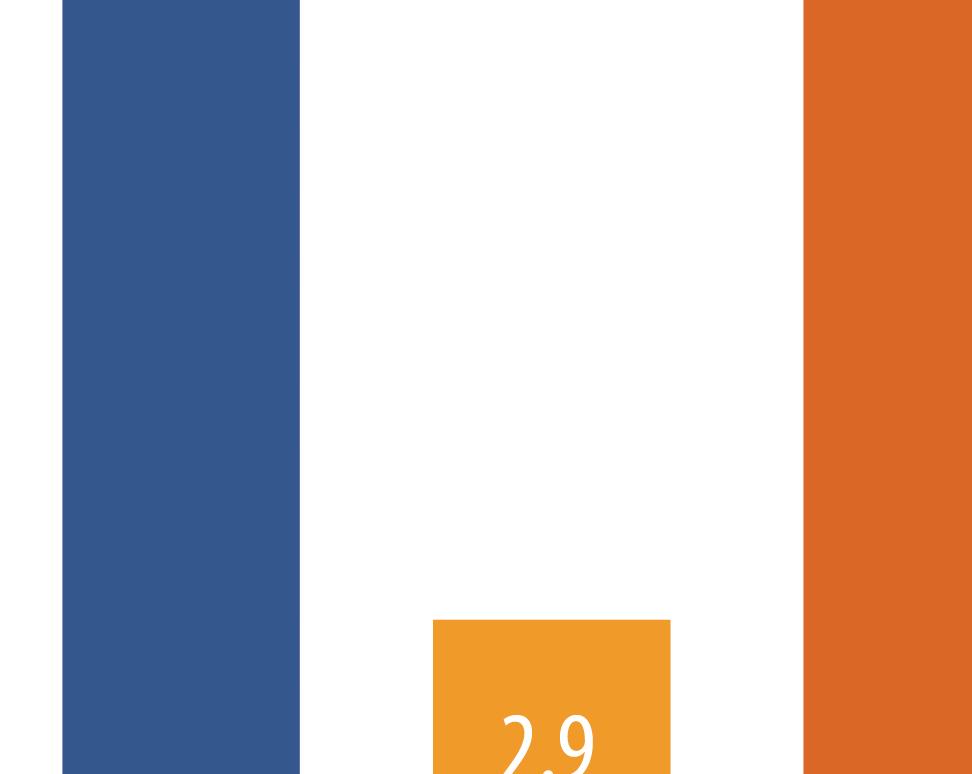




For a variety of reasons, the pandemic caused many people to put off diagnostics and screenings for several years. This resulted in delayed diagnoses that are more costly now than they would have been had they been detected earlier. For example, respiratory diseases moved into the #4 position over the last two years. The top two respiratory diseases are treatable through high-dollar specialty medications and gene therapy, but the cost of those meds went from tens of thousands of dollars to hundreds of thousands and even millions of dollars. Historically, $1M claims were deemed catastrophic, but over the last eight years — and more dramatically in the last two years — the new level of catastrophic claims is shifting towards $2M. Finally,hospitalshaveseensignificantfinanciallossesover
But not everyone has a will. The survey found that 40% of those surveyed, including 46% of women, said they don’t have a will. The most common reason for not having a will is that they don’t have money or assets to leave to loved ones.
or assets, while 26% said they don’t know
where to start, 25% said they haven’t had the time and another one-quarter believe writing out a will is too expensive.
Pandemic influences life insurance purchases
the last two years. Elective surgeries are their bread and butter, but elective surgeries were put on hold early in the pandemic and scheduling has not quite caught up to their pre-pandemic levels. At the same time, hospitals saw costs skyrocket as they had to adapt their practices to meet the new sterile environments that Covid-19 demanded.
COVID-19 isn’t just inspiring more wills. The pandemic is also leading people to think about life insurance.
[See forbes.com/advisor/ life-insurance/best-life-insurancecompanies/]
 Cindy Jones, SVP, Benefits Consulting department head, Dickerson Insurance Services:
Cindy Jones, SVP, Benefits Consulting department head, Dickerson Insurance Services:

Large employers are managing many moving parts post-pandemic. From managing acquisitions, to recruiting challenges, to controlling health plan costs while caring for employees, the landscapeofbenefitprogramsinthismarketischanging. Downsizing and right-sizing continue to be factors. As a result, employers that have traditionally been composite-rated grapple with age-rated plans as they shift to the small group market.
Nearly half (46%) said they’ve considered buying a life insurance policy or additional coverage because

OCTOBER 2022 CALIFORNIA BROKER | 21 CalBrokerMag.com
“The other major trend we are seeing among employers as we emerge from this pandemic is a focus on whole-person health, including the importance and value of behavioral health support and even specialty benefits such as vision, dental and hearing.”
— Tami Adams, vice president, Key Accounts, SoCal Sales and Account Management, UnitedHealthcare
Employee wellbeing programs are increasingly in demand. These can take the form of an expansion of existing telehealth or creative point solutions for medical and financial wellness benefits that help ease burdens for employees. Medicare expansion and exchange plan premium assistance for most income levels, while good for employee affordability, have brought about the unintended consequence of large employers struggling to meet health plan participation requirements.
The COVID-19 pandemic dramatically accelerated the adoption of digital health resources and benefits, including triggering a 2,500% increase in virtual care visits among UnitedHealthcare members.





We are seeing that virtual care has staying power even as many people have returned to in-person appointments, with virtual care visits in 2021 among UnitedHealthcare members approximately matching the total for 2020, plus continued significant use of telehealth so far in 2022. The evolution of virtual care is also important to its continued use post-pandemic. Virtual care

22 | CALIFORNIA BROKER OCTOBER 2022 CalBrokerMag.com
Tami Adams, vice president, Key Accounts, SoCal Sales and Account Management, UnitedHealthcare:
“There’s a lot of interest in alternative funding solutions like level funding and administrative services only (ASO). Employers are also looking for creative wellness offerings from various carriers that provide solutions for large employers and their teammates.”
— Brian Sullivan, market director for California, BenefitMall
has expanded from delivering care to people who are experiencing an acute medical episode to also focusing on preventing and detecting disease and helping people manage chronic conditions. Through better insights and digital tools, virtual care is also able to flag gaps in care, prevent complications, and avoid unnecessary hospitalizations — all of which can help improve health outcomes and curb costs. The other major trend we are seeing among employers as we emerge from this pandemic is a focus on whole-person health, including the importance and value of behavioral health support and even specialty benefits such as vision, dental and hearing. As COVID-19 has further demonstrated, the body and mind are one interconnected system, so benefit programs must account for that.
Dena Allchin, director of Large Group Sales, Word & Brown General Agency:
The pandemic put a major spotlight on healthcare and the value of employee benefits. California’s largest employers were hit with astronomical challenges. They began to operate remotely — all while navigating a novel coronavirus, calculating employee and workplace safety, managing employee morale, and keeping their businesses afloat amid the many restrictions and limitations placed on commerce.


Most employers were required to shift to a remote-work environment, which brought a wave of uncertainty regarding benefits. What if employees were unable to work or telework for a certain duration of time? Could they continue benefits under their health plans, even though they were not working traditional full-time hours because of the pandemic? When should an employee be “terminated” from the policy? When does COBRA begin in these circumstances?
Employers turned to their ERISA plan documents and their health plan issuers (carriers) for guidance on these questions. Many
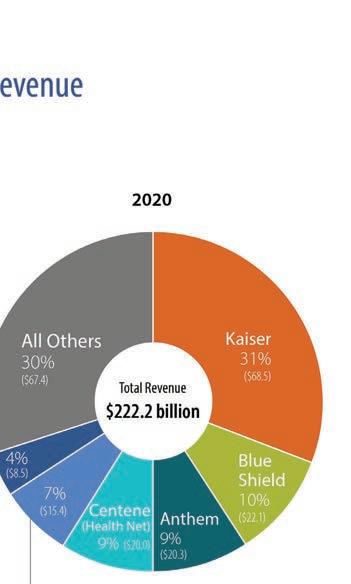

insurance carriers allowed employees to continue benefits, even if they were (temporarily) not providing full time hours. However, most employers’ plan documents needed to be amended to allow such changes to take place. And because of the sudden timing and impact of the pandemic, many employers did not have legal resources to investigate their options for their plans. Many employers turned to their health insurance brokers for help.
Lou M. Zinzi,
Management, Group Benefits, Guardian Life Insurance Company of America
of
The Families First Coronavirus Response Act (FFCRA) created requirements for larger employers to offer paid-time off, with benefit protection, to employees who were unable to work or telework for reasons related to COVID-19. This was a firstof-its kind mandate from the federal government, which caused a lot of initial confusion. California required employers in its state to continue FFCRA-like leave, even after the federal government made it optional for employers after the first initial several months.
OCTOBER 2022 CALIFORNIA BROKER | 23 CalBrokerMag.com
“The most effective way to sell is by providing companies with best-inclass consultative support, including benchmarks, real-time reporting capabilities, and insights into trends. Carriers need to be flexible to meet each employers' unique needs. At the same time, benefit providers must provide a seamless, supportive, and engaging employee experience, including user-friendly digital tools and self-serve options.”
head
Client
The American Rescue Plan Act (ARPA) created COBRA subsidies, which allowed Assistance Eligible Employees (AEIs) to take advantage of premium-free federal COBRA (and CalCOBRA in many circumstances) for a six-month window in 2021. The administration of these subsidies was complex and burdensome for employers. For this and other reasons, most employers did not see a high utilization of such subsidies. ARPA also created enhanced Premium Tax Credit (PTC) subsidies for individual coverage applicants — capping the second lowest-cost Silver plan premiums at 8.5% of household income (extended into 2025 with the Inflation Reduction Act). While this does not impact the employer market directly, it can certainly make employees interested to know what their coverage options are in a state exchange. Employers should remind their
employees that they are ineligible for PTCs on a state exchange if their employer (of any size) makes them an offer of ACAcompliant, affordable coverage.

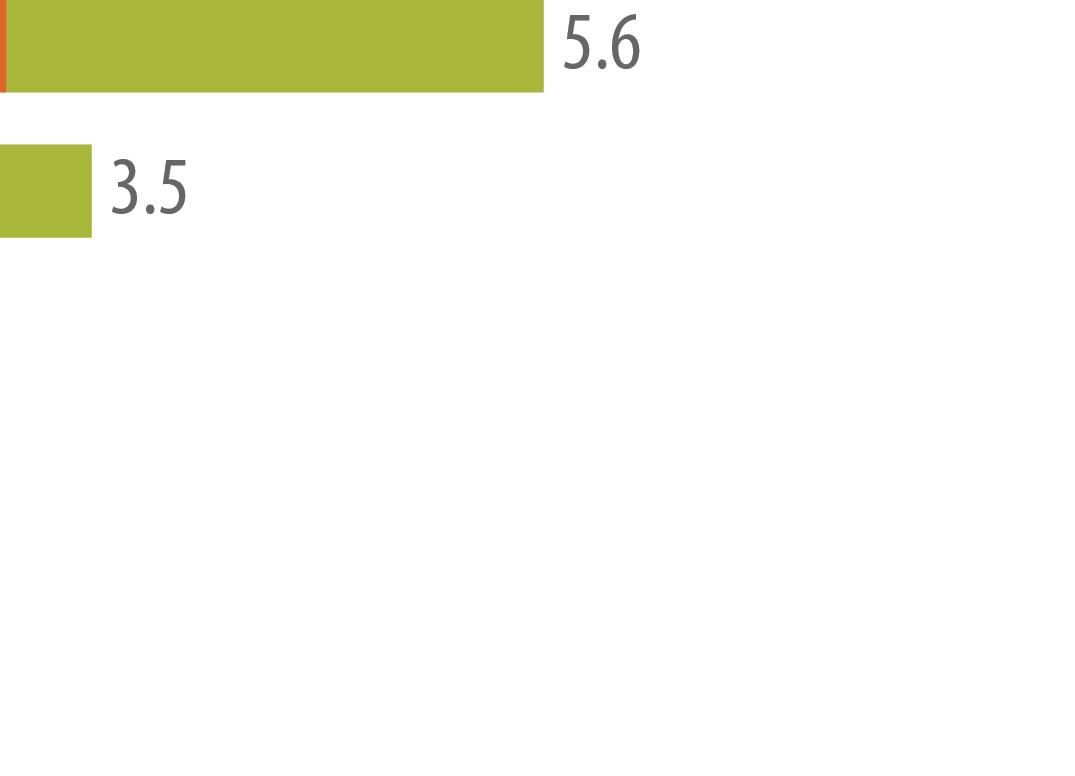
CB: What are the most effective ways to sell to large groups in California right now? Are there particular benefits or other aspects that brokers are honing in on?
Sullivan, BenefitMall:
We’re seeing slightly different trends play out in different parts of the state. In Southern California, ACO and HMO models have really benefited employers with low monthly costs and containment in the fully-insured area. In Northern California, we’re seeing more interest in HDHP plans with incentivized and
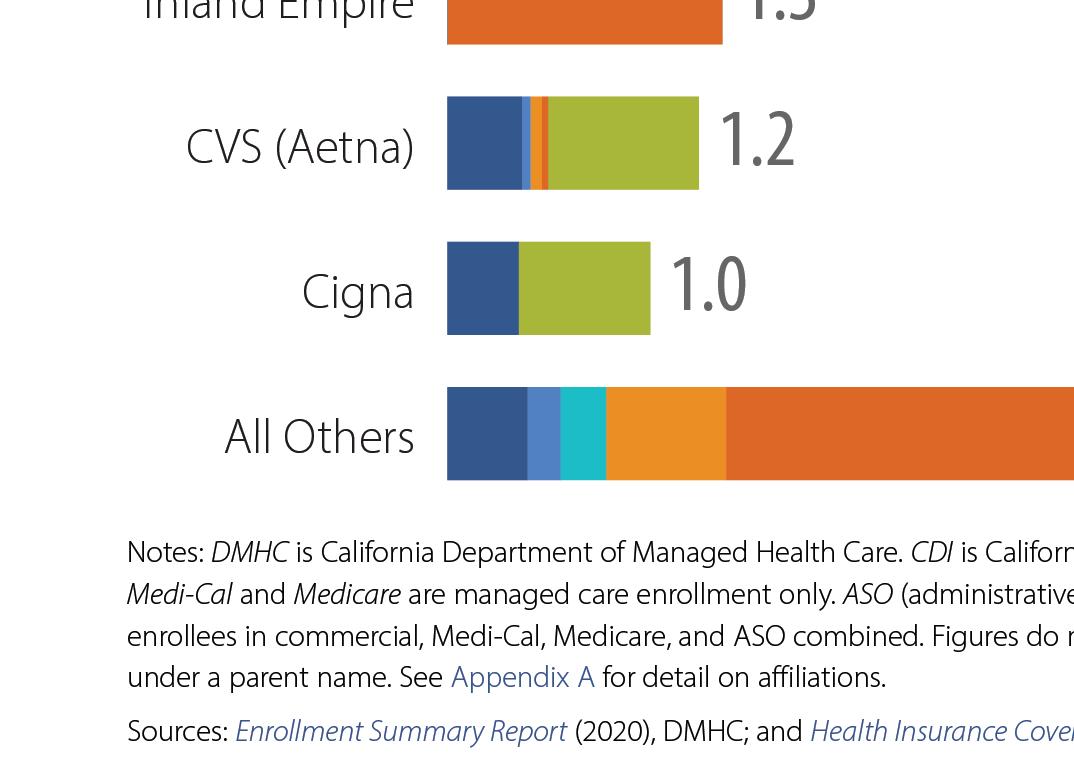



24 | CALIFORNIA BROKER OCTOBER 2022 CalBrokerMag.com
increased ER sponsorship.
There’s a lot of interest in alternative funding solutions like level funding and administrative services only (ASO). Employers are also looking for creative wellness offerings from various carriers that provide solutions for large employers and their teammates. Given that many people saw friends and family struggle during the pandemic, employers are using voluntary financial protection plans like disability, critical illness, hospital indemnity, and more to make their overall benefits offerings more attractive to prospective employees and teammates.
Jones, Dickerson:
Brokers who are looking for ways to enhance their clients’ experiences and outcomes are turning to data-driven solutions that employ analytics to focus on population health management and improve medical spend waste. On a less scientific and more subjective level, a well-designed employee benefit survey can provide valuable information about what benefits are most important to which employee groups. Compliance remains king. Brokers who take measures to ensure their clients are compliant with state and federal regulations are retaining clients in large numbers.
Lou M. Zinzi, head of Client Management, Group Benefits, Guardian Life Insurance Company of America:
The most effective way to sell is by providing companies with best-in-class consultative support, including benchmarks, realtime reporting capabilities, and insights into trends. Carriers need to be flexible to meet each employers’ unique needs. At the same time, benefit providers must provide a seamless, supportive, and engaging employee experience, including user-friendly digital tools and self-serve options.
As for particular benefits, an important trend is the focus on mental wellness. A recent Guardian study (www.guardianlife. com/reports/mind-body-wallet) reports that 79% of organizations say that improving the health and wellness of their employees is extremely or very important. The need is clear, as each year, one in five adults in the U.S. (50 million people) are affected by a mental health condition. Through our partnership with Spring Health, we are pleased to offer our customers access to mental health professionals and a wide range of solutions clinically proven to reduce recovery times and also help companies decrease employee turnover and increase productivity.
Adams, UnitedHealthcare:
As employers look to develop and refine health benefit plans, it will be important for our broker partners to help clients focus
on integrating pharmacy, medical and specialty benefits to help support a whole-person approach to care. We believe the future of healthcare resonates around offering choice and seamlessly connecting members to affordable healthcare. Ensuring members have accessibility to care in the right place, at the right time and for the right cost will always be a critical element of our value proposition at UnitedHealthcare.
We recognize that our partner-brokers work hard to develop coverage packages for their employers that specifically meet our members where they are in their healthcare journey. It’s an important goal we must work together to attain while concentrating on continuing to offer sustainable, affordable healthcare options to employers. Innovative solutions to mainstream barriers is key. For instance, come Jan. 1, 2023, UnitedHealthcare will eliminate out-of-pocket costs in standard fully insured group plans for certain preferred prescription drugs, including insulin and several drugs used to treat emergencies such as severe allergic reactions, hypoglycemia, opioid overdoses, and acute asthma attacks. Eliminating outof-pocket expenses for these critical medications can help reduce the burden of medical costs on consumers and encourage better medication adherence, reducing the risk of complications and expensive hospitalizations.And, it’s part of our company’s ongoing efforts to ensure people get the drugs they need while making healthcare more affordable. High prices are a significant barrier to prescription drugs for many people, so we are doing what we can to make a difference.
Allchin, Word & Brown:
Large group renewals are issued 120 days in advance, which allow employers ample time to prepare. But the large group quoting and renewals process can take some time — so it is important for the employer to begin looking at its renewal as soon as it is received.
Health insurance brokers should ensure they are providing both strategies and solutions for their large clients. Brokers are evaluating market trends and plan-utilization behavior to ensure products and plan offerings align with the needs of their clients — and their employees.
Offering a complete benefit product portfolio gives large employers access to the most health plan options for their employees. Large employers understand the importance of a strong benefits package, which helps them attract and retain talented employees.
OCTOBER 2022 CALIFORNIA BROKER | 25 CalBrokerMag.com
Health insurance brokers should ensure they are providing both strategies and solutions for their large clients. Brokers are evaluating market trends and plan-utilization behavior to ensure products and plan offerings align with the needs of their clients — and their employees.
Dena Allchin, director of Large Group Sales, Word & Brown General Agency
CB: How is self-insurance or direct contracting impacting large group now?
Allchin, Word & Brown:
Self-funded insurance plans are often a strong fit for the largest employers — and are sometimes a fit for smaller employers with less than 500 FTE.
Self-funded plans allow the employer flexibility in plan design, but also create an administrative burden for the employer. In essence, the employer creates its own health plan — and the employer is responsible for full compliance with all applicable laws. Selffunded plans are subject to federal ERISA law first, then California state law. Fully-insured plans are subject to California state law first, then federal ERISA law. The compliance items for these two types of plans are similar, but different. Employers usually have hefty compliance responsibilities when creating and administering self-funded plans.
education that is delivered via a variety of media is key to the success of a self-funded model.
Direct contracting, which was the basis for many early health plans (Kaiser and Blue Cross Blue Shield), continues to be reserved for the very large and government- or union-based programs (think CalPERS).
Adams,
UnitedHealthcare:
Self-insurance combines the best of administrative, actuarial and plan development services into a program that is highly customized, customer-centric and tax advantaged for the employer. It can also include the use of reference-based pricing, level-funding, and benefit captives.
Cindy Jones, SVP, Benefits Consulting department head, Dickerson Insurance Services
Not every employer is a good fit for self-funding, but it is worth exploring for an employer with favorable demographics.
Sullivan, BenefitMall:
The introduction of level funding has really played an important role by providing a stepping stone to employers who want more transparency and greater control over where their money is going, but aren’t quite ready for self-insurance. Many groups that start down the road of level funding will stay in that space for three to five years. This gives them time to determine if an ASO makes sense as the next step, or if — for a variety of reasons — they need to step back to fully-insured. In Southern California, the HMO/ACO/Limited HMO options have made it particularly challenging to adapt to alternative funding arrangements.
Jones,
Dickerson:
The U.S. Department of Health and Human Services reports that more than 80% of employers with 500 or more employees self-insure their benefits. A growing number of employers are taking a vested interest in how benefits are funded and how much those benefits cost them and their employees. Selfinsurance combines the best of administrative, actuarial and plan development services into a program that is highly customized, customer-centric and tax advantaged for the employer. It can also include the use of reference-based pricing, level-funding, and benefit captives. Like all other benefit programs, employee
At UHC, we are seeing an increased number of clients who want more flexibility within their business model, but are still unsure about taking on the financial risks of becoming self-insured. So, what we are currently working on with an increased number of clients is the proper glidepath to support the movement to self-insured by assisting with a bridge by leveraging alternative funding. One example is UnitedHealthcare’s Level Funding program, a self-funded medical plan designed to compete in a fully insured market like California. It mitigates the risks associated with the more widely understood self-funded models, offers fixed costs which include administration costs and stop loss premiums, limiting risk on individual claims and the group’s total claims. It offers transparency with detailed reporting and the employer may receive a potential surplus when medical claims are less than maximum claims liability. This is designed to deliver more value for our clients, plan participants and their covered family members. Clients may even save on medical plan costs by bundling our Level Funded medical plan with UnitedHealthcare dental, vision and financial protection plans, maintaining that all important focus on whole-person health.
Not every employer is a good fit for self-funding, but it is worth exploring for an employer with favorable demographics.
CB: Is there anything on the horizon legislatively with large group health that concerns you?
Misty Baker, Director of Compliance and Government A airs, BenefitMall:
One item to watch is AB 570 — also known as the “Parent Healthcare Act”— that becomes effective for individual healthcare coverage issued, or renewed beginning Jan. 1, 2023. This change in the law will allow adult children to add their parents or stepparents to their individual health insurance coverage. It’s possible that this will roll up to large group, but at this point, we just don’t know.
Federally, all size groups have much to plan for in
26 | CALIFORNIA BROKER OCTOBER 2022 CalBrokerMag.com
2023. Self-funded/level funded groups need to prepare for all the aspects of the Consolidated Appropriations Act, 2021 (CAA) — machine readable files, prescription drugs and many other CAA regulations will all need to be addressed. Transparency will be a recurring theme in 2023. The CAA requires group health plans and health insurers to submit information each year to the U.S. Departments of the Treasury, Labor, and Health & Human Services regarding drug costs. Fully insured groups won’t dodge transparency requirements; they too will need to get into compliance.
Jones, Dickerson:
The 2023 ACA affordability threshold is decreasing to 9.12% from 9.61% in 2022. This, coupled with the Inflation Reduction Act that has enhanced premium tax credits for exchange plans through 2025, will continue to have an effect on employersponsored health plans and a large employer’s ability to meet insurance company participation guidelines. Large employers will need to be mindful of these changes as they establish premium and contribution levels for their plans.
The Consolidated Appropriations Act (CAA) Pharmacy Transparency initial reporting is due for all fully insured and self-insured plans December 2022, with subsequent reporting due June 1 of each year for the prior year. Employers of all sizes should be prepared to assist their carriers, PBMs and TPAs in completing this reporting that includes both pharmacy and general health plan utilization data points.
Allchin,
Word & Brown:
For the first time since the inception of the ACA’s Employer Mandate, the Affordability Percentage for Applicable Large Employers (ALEs) has dropped below the 9.5% threshold. It is 9.12% for plan years beginning in 2023, which was a reduction of 0.49% from 9.61% for plan years effective in 2022. While not necessarily a concern, it’s important to highlight that ALEs will have to carefully evaluate health plan affordability in 2023 — with a potential requirement to increase employer contributions, in order to satisfy affordability under ACA’s employer mandate in 2023.
Fixing the “Family Glitch” is a hot item for large employers. Currently, ACA affordability is based on the lowest-cost ACA-compliant health plan at the employeeonly rate. An employee who has been made an affordable offer of coverage under such standards is not eligible for a PTC for himself/herself — and neither is his/her entire family (as applicable). This can be problematic for dependents, when the ALE is not contributing much (or is contributing a very small amount) toward dependent premiums. The Biden Administration is looking to close the Family Glitch gap under some recent proposals — however the proposed “fix” may require employers to report more information regarding their health plans to the IRS and state exchanges than ever before.
The other major trend we are seeing among employers as we emerge from this pandemic is a focus on whole-person health, including the importance and value of behavioral health support and even specialty benefits such as vision, dental and hearing. As COVID-19 has further demonstrated, the body and mind are one interconnected system, so benefit programs must account for that
ACA IRS reporting is always a challenge for employers. There is a strong industry push via NAHU/NABIP for S. 3673/H.R. 7774 — “Commonsense Reporting Act of 2021.” If enacted, ALEs would be permitted to proactively report coverage offers to the IRS before the plan year begins (at their discretion), rather than after the conclusion of the plan year. Doing so would allow employees better up-front clarity regarding their eligibilities for PTCs and would ease annual reporting burdens during the first quarter, when employers are also completing IRS W-2 Forms.

MEET THE LARGE GROUP SURVEY PARTICIPANTS




Thanks to all our collaborative partners for sharing your trusted advice and expertise.

OCTOBER 2022 CALIFORNIA BROKER | 27 CalBrokerMag.com TAMI ADAMS VP, Key Accounts, Southern Calif. Sales and Account Management, UnitedHealthcare DENA ALLCHIN director of Large Group Sales, Word & Brown General Agency MISTY BAKER director of Compliance and Government A airs, BenefitMall CINDY JONES SVP, Benefits Consulting department head, Dickerson Insurance Services BRIAN SULLIVAN market director for California, BenefitMall LOU M. ZINZI head of Client Management, Group Benefits, Guardian Life Insurance Company of America
SENIOR SUMMIT KEY NOTE SPEAKER
WHY CHOOSE YOU?
The Art of Transferring Trust
BY DAN CLARK
Hall of Fame speaker and high performance business coach Dan Clark was recently the keynote speaker at the August IEAHU, OCAHU & SDAHU Medicare Senior Summit in Temecula, Calif. The event drew nearly 800 agents and brokers for a 3-day event exploring carrier offerings, legislative updates and much more.
As I hopscotch the globe speaking to most of the Fortune 500 companies, NBA and NFL teams, Million Dollar Round Table members, senior military leaders and coaching thousands of corporations and Associations, two questions always take center stage. CEOs, HR directors, and meeting professionals/event planners want to know: ‘How do you get everybody in the organization to care as much about the organization as you do?’
Answer: Grow more leaders who believe what you believe, instead of generating more followers — and ‘seek to bless, not impress’ based on integrity, respect, duty, honor and service before self. Every culture is created between the strongest belief, highest expectation and best behavior the leader lives by — and the worst behavior the leader tolerates. Getting people to believe in you and your message is predicated on being able to share your personal and organization vision and story in an engaging entertaining way!
Sales professionals want to know: ‘How do I make myself stand out above the competition in every personal and professional category, so people choose me, not just somebody who does what I do?’
28 | CALIFORNIA BROKER OCTOBER 2022 CalBrokerMag.com
MEDICARE

OCTOBER 2022 CALIFORNIA BROKER | 29 CalBrokerMag.com
Answer: Competitive advantage is not created by doing more than your competition. It’s created by doing what your competition is not willing to do. It’s created by doing more than anyone in your organization is willing to do to become the very best version of yourself — knowing the only person you need to be better than is the person you were yesterday!
This means the goal is not to do business with everybody who wants what you have. The goal is to do business only with those who believe what you believe — so they choose you. People don’t buy what you have — they buy what you believe. You don’t attract who you want — you attract who you are, by being able to showcase your character, compassion and solutions in a powerful conversation that turns every ‘sales pitch’ into a ‘serve pitch’ — showcasing the benefits of doing business with you.
What is your value?
In our free enterprise, incentive motivated America, we are paid for the value we bring to the marketplace. People choose you based on your perceived value to the marketplace. It takes time to add value to the marketplace, but we are not paid for time. If this was true, we could stay home in bed all day and have someone send us money. For us to make more money we must make ourselves more valuable to the marketplace by spending more time working on ourselves than we do on our job! American entrepreneur, author and motivational speaker Jim Rohn reminds us: ‘Formal education makes you a living — self education makes you a fortune.’
The definition of leadership and sales is the ‘transference of trust.’ The fastest and most sustainable way to transfer trust and stand out in the marketplace is to position yourself as a charismatic, intelligent, sophisticated, elegant human being — able to articulately present your ideas in an intellectually challenging, emotionally stirring, entertaining story. Prospective buyers don’t remember the facts, graphs and figures in your sales presentation. They remember the interpretation of the information, why and how it relates to them, what they feel and why they feel it. These feelings are created only because you took the time to become a powerful polished storyteller that equipped and empowered you to connect heart-to-heart authentically and deeply, spirit to spirit, soul to soul with them because of the stories you just shared!
Your professional message can’t be about a formula or strategy, until it’s about your personal integrity and why you believe what you believe based on your eye-witness experience.
If you precede or follow a competitor’s sales presentation,
what will make you different and sway the prospect’s decision to buy from you, instead of them, is simply your ability to connect their heads with their hearts. So they close themselves on your product/service based on the stories you strategically share.
At the end of every day, every conversation, every personal and organizational branding strategy, every sales and marketing campaign, and every personal relationship, ends up being ‘all about the story!’
Warren Buffet says, ‘We can increase our value in the marketplace by 50% simply by becoming better public speakers and passionate, eloquent storytellers.’ How? Why?
Stories are the ‘social proof’ required to validate your credibility, unique factor, and value in the marketplace.
Are you investing your time and resources into personal development for you and your employees, to become more interesting both at work and at home? Are you investing in Masterminds, Leadership Development, Public Speaking Bootcamps, and Story Selling Master Classes to develop the skills required to take yourself to the next level?
How do you make yourself more valuable?
Knowledge is power, but it has no heart. We don’t learn to know — we learn to do. All the information in the world is not going to make a person successful or significant. It’s like the guy who has three PhDs: one in philosophy, one in psychology, one in sociology — he doesn’t have a job but at least he can explain why! Ha! Reason leads to conclusions, but it is emotion that leads to action! We sell with emotion and validate with logic and reason. A well told story includes both facts and feelings — connecting both the head and the heart.
When you only teach and focus on the What and How, you only engage the brain/ head — which makes your interaction ‘transactional’ and superficial. However, when you tell a compelling story, you add to the What and How, a passionate Why and meaningful Want. This engages both the head and the heart, causing the blood to pump more rapidly, the brain to fire and our muscles to engage. When we only engage the head, no such extraordinary experience occurs!
Why become a prolific storyteller?
Steven Jobs said, ‘The most powerful person in the world is the storyteller. The storyteller sets the vision, values, and agenda of an entire generation that is to come.’ Facts tell –stories sell.
30 | CALIFORNIA BROKER OCTOBER 2022 CalBrokerMag.com
When we get to know one another’s stories, we find common ground and shared beliefs where we connect, convey and exchange the deepest level of total trust that bridges the gap from stranger to friend. This transforms our relationship from participant to engaged listener, from trying to sell something to being a trusted advisor on what they decide to buy!
When I coach CEO’s, executives, managers and sales teams, I teach my process of developing your ‘Story Telling Skills’ with structure, sequence, timing, impact, using persuasive engaging language, making every story funny, evocative, and emotional. We then practice telling stories until it becomes conversational so you never get ‘word bound’ and can articulately share your story whenever called to do so.
Unless you deliver your value proposition, offering your products and services with the same level of excellence that created them — there is a disconnect, which circumvents the transference of trust, and you are perceived exactly like your competitors are perceived — competing only on price and product features in a business transaction.
This is why the research conducted by University of Notre Dame professor Dr. Herb True shows:
•44% of sales professionals quit after one follow up sales call
•24% quit after the second call
•14% quit after the third call
•12% quit after the fourth call
•92% of sales professionals quit by the fifth sales call
Yet research shows 85% of our sales are closed between the fifth and the twelfth sales call!
The ‘Secret Sauce’
The secret to closing more business and breaking sales records is to get prospective buyers to trust you enough to invite you into their inner circle of family and friends five to twelve times, until they close themselves! This is accomplished by connecting at the deepest level, competing on love, trust, respect, duty, honor, service before self — which is priceless and conveyed through the art of story selling.
A critical skill I teach my audiences that help people ‘choose you’ is what I call ‘Presentation Literacy.’ This skill can be taught and is a superpower to pitch your ideas, sell your products, and accomplish your dreams!
Imagine working on one skill and once you improve it, that skill will raise your value by 50%. Not only in your professional job and in your ability to climb the corporate leadership ladder — but in your personal life, you will realize that before we can ever get anyone to trust us — enough to date, to love, to marry or to purchase a product or service we represent — we first need to showcase our character and values, and present our genuine personality in the form of our experiences and stories.
When we get to know one another’s stories, we find
common ground and shared beliefs where we connect, convey and exchange the deepest level of total trust that bridges the gap from stranger to friend. This transforms our relationship from participant to engaged listener, from trying to sell something to being a trusted advisor on what they decide to buy!
Remember the purpose of every meeting — one on one, one on ten in a boardroom, one on 10,000 in an arena — is to rekindle passion, unlock creativity, trigger imagination — to give the listener an experience they can’t get at home or work – and to take them to an intellectual and emotional place they cannot take themselves — through the power of storytelling!
Learn to tell your own stories! Be authentically you — you’ll make a lousy somebody else! When you are — its guaranteed people will CHOOSE YOU!
DAN CLARK is the founder and CEO of Dan Clark & Associates, an international leadership development company. He is a Certified Speaking Professional (CSP), Counsel of Peers Award of Excellence (CPAE), high-performance business coach; New York Times best selling author of 35 books and university professor. Clark is a primary contributing author to the Chicken Soup for the Soul series; international podcaster; gold record songwriter; and an award-winning athlete who fought his way back from a paralyzing injury that cut short his football career.

Clark was inducted into the National Speakers Hall of Fame and has been named one of the top ten motivational speakers in the world. He has spoken to over 6 million people, in all 50 states, in 71 countries, on 6 continents, to more than 6,000 audiences including most of the Fortune 500 companies, Super Bowl Champions, NASA, and to our Combat Troops in Iraq, Afghanistan, Asia and Africa.
To learn more about The Art of Story Selling, Clark’s coaching programs, or for speaking engagements, contact: booking@danclark.com, 800-676-1121 ext. 1
OCTOBER 2022 CALIFORNIA BROKER | 31 CalBrokerMag.com
WOMEN IN LEADERSHIP
The Trick to Get More Women in the Industry? Mentoring
By Jessica Word
For the last several years, more attention has been paid to getting students interested in science, technology, engineering and math (STEM), because too few college graduates, especially women, are entering careers in these fields.
According to the Bureau of Labor Statistics (BLS), 45% of women in the workforce hold a bachelor’s degree or higher, indicating a strong desire to advance in the corporate world. Yet, in STEM careers, such as those with a heavy focus on math or computer programming, women make up only 27% of all workers, according to the U.S. Census Bureau.
So, what is happening here? Although women have made gains in the financial world, many continue to shy away from careers that require technical and math skills, often because they don’t see women in the rank and file. An argument can be made that the health insurance industry, with its complex quoting engines that are necessary to compute competitive benefits packages and break down costs for customers, is an example of one such career.
But beyond a collegiate education, there is something we can do in our businesses right now that can bring more women into our industry. No matter the field, we are all drawn to a career because we see others who look like us in that profession.
If we want to see more women (and more diversity in general) in our industry, we can’t just leave it to the schools. We must aggressively promote mentorship within our organizations.
Mentorship is a two-way street
Multiple studies show mentors are incredibly valuable. If a woman develops a personal relationship with a more seasoned professional early in her career, she is likely to be promoted more quickly than those without mentors, according to a study from SAP HR Research. This is why it’s important that brokers,
health benefits specialists and other industry professionals recognize the many values of mentoring — it’s a mutually beneficial relationship.
A good place to start is to establish a culture of mentorship among all employees, regardless of their tenure in the industry. This can have many benefits, including increased job satisfaction, a stronger commitment to the profession and confidence that she can advance her career. This not only helps a woman reach her full potential as an individual, but builds appreciation for her employer. Plus, ongoing support of a formal or informal program by leadership can lead to overall company growth.
Serving as a mentor also helps the more seasoned professional in many ways. It strengthens leadership skills, while also allowing the mentor to take a step back and reflect on areas in their own career that may need a bit of a tune up. And mentees can teach their mentors new things — they can bring fresh perspectives and new techniques into the industry. Maintaining an open mind encourages mentees to reciprocate and share their knowledge, leading to personal growth for both parties.
One-on-one relationships are key
Throughout the pandemic, many organizations have focused on fostering relationships within teams and companywide staff, albeit remotely and through videoconferencing. This will continue to be important, but cultivating strong connections with mentees should also be in-person.
One-on-one relationships, especially those with women just starting out in their careers, require a regular time commitment to establish deep, meaningful and organic connections. It also allows both parties to develop a strong rapport with each other,
32 | CALIFORNIA BROKER OCTOBER 2022 CalBrokerMag.com
LEGISLATION
COVER STORY
which can be difficult to nurture in a group environment or through a Zoom call.
Authenticity is incredibly important and key to creating connections that are not just transactional. Relationships built on trust and transparency end up transcending the professional realm and often become personal — and can last for decades. Having someone readily available to lend an ear when you need advice for a career shift, big move or promotion is invaluable. Ultimately, the more women who develop strong relationships with other professionals creates a “pay it forward” culture that has the potential to grow the number of women professionals in the industry.
Extend your mentorship network into schools
A good mantra to business success is “networking, networking, networking!” The same can be said for continuing to grow mentoring programs that will see more women candidates for your organization.
Development Dimensions International (DDI) found that 63% of percent of women who participated in its survey reported never having a formal mentor, but 67% of women rated mentorship as incredibly important in helping them to advance and grow in their careers. Clearly, there is work to be done.

It’s important, then, to initiate mentoring opportunities outside the four walls of your organization. Partnering with local colleges and universities, especially those with strong business programs, allows organizations to get in front of prospective
employees and let them see our industry as a path for women.
There are many ways for accomplished professionals to become involved, either by serving on panels at schoolorganized events or allowing female students to shadow you at the office. Let’s face it, the benefits industry is largely underthe-radar and a hidden job opportunity for students. There is immense potential for more women joining the health insurance industry ranks.

Here’s the bottom line for women working as benefits specialists: take the leap and reach out to a new professional. It requires regular maintenance and outreach to cultivate and grow a strong list of mentees. Cultivate a culture of mentorship within your organization and increase your involvement at local colleges and universities to get in front of women before they make any long-term career decisions. Lastly, there is power in reaching out to a woman early in her insurance career to offer important guidance that will help her succeed.
For additional information, visit www. wordandbrown.com.
OCTOBER 2022 CALIFORNIA BROKER | 33 CalBrokerMag.com
JESSICA WORD is CEO of Word & Brown General Agency. Established in 1985 and headquartered in Orange, Calif., Word & Brown is one the state’s largest general agents.
Transform Your Agency from Laggard to Leader
6 critical tech platform features take you from zip to ZING!
BY DAVID MISORSKI
Driven by their experiences with Amazon, Netflix and other digital customer experience leaders, policyholders now expect more from their insurers than at any point in history. More personalized options to choose from, easy-to-understand policies, and non-invasive medical exams are top of mind. Throw in rewards for maintaining healthy habits, and you have an advantage.
Life and health brokers who address their client’s needs
and expectations by embracing technology and working with tech-savvy carriers will take the lead. As a broker, you can set yourself apart as a digital leader in a rapidly changing market that’s rife with insurtechs and other new entrants. Giving your customers what they really want is critical to keeping an edge.

Here’s how to prepare for the future
As is the case in retail and banking, the fastest-growing life insurance companies are tech driven. Their vision is more
34 | CALIFORNIA BROKER OCTOBER 2022 CalBrokerMag.com TECHNOLOGY
encompassing than just an app or a network. Successful companies ask the bigger “what if” questions and use technology to answer them quickly, which attracts more talent and gives them an edge over the competition. Creating an innovative, agile work environment can enable you to turn ambitious ideas into reality.
Faced with the accelerating pace of digital transformation, two distinct approaches have come to the foreground in life insurance. Which one can help your organization? Will you continue to invest in traditional, conventional ideas that focus on risk? Or is it time to shift your focus to speed and agility by embracing technology?
The life insurance agents who focus on the latter are the future winners: they’re digital-ready leaders and share many similar traits in technology.
Carriers AND agents should look for these six features when choosing a technology platform: 1
Open system. A system must enable unfettered, inbound and outbound interactions through Application Programming Interfaces (APIs) while being easily adaptable and flexible to business needs. This openness makes unifying backend operational data and processes or powering up with third-party data and apps a breeze for life insurers. 2
Customer-centric. Life insurers are finding advantages in using platforms that permit the introduction of any product in any channel — and sold to any customer — using thousands of opensource APIs. Ideally, the technology also provides low-code tools and leverages AI-assisted automation to blend channels into a unified or “channelless” experience, whether B2C, B2B or B2B2C. 3
Cost effective. Here’s a great tip: By letting you shift capital expenditures to operating expenses, a leading coretech platform can promote cost predictability and reduce risk, which lowers total cost of ownership (TCO) and generates a faster return on investment (ROI). Coretech is the logical combination of insurance core systems with cloud-native technologies and architecture.
5SaaS delivered. Software As A Service (SaaS) delivery empowers life insurers to focus on their core business and lean on a proven technology platform to provide performance, reliability, security and compliance in a package with predictable pricing and the ability to grow. SaaS is licensed on a subscription basis and is centrally hosted. It is also known as "on-demand software" and Web-based/Web-hosted software.
6DevOps enabled. To support new technology for your business, you need system adaptability to keep up with inevitable demands for change. For rapid implementation, innovation, and transformation, life insurers have been turning to DevOps. DevOps increases an organization's ability to deliver applications and services at high velocity: It allows you to evolve and improve products faster than organizations using traditional software development and infrastructure management processes. This enables fast and low-cost product launches, non-disruptive upgrades, automated builds and continuous agile cycles that integrate, deploy and deliver new or updated products. Platforms with coretech technology provide DevOps that reduce life insurers’ IT training needs and increase management efficiency through cross-platform Infrastructure-as-Code (IaC).
Does this sound too techie and way above your head? If so, look to experts to advise you sooner rather than later. Digital transformation won’t wait. It’s already here, and more change is on the way. The ability to reimagine customer journeys and accelerate experiences will determine life insurance industry winners and losers. As a result, an ambitious insurer’s single most decisive differentiator for today and tomorrow is agility.
Being prepared and staying ahead of the curve requires a change in mindset, which isn’t easy and requires a conscious effort. As customer expectations evolve, insurers with a bold vision will create a true digital transformation that helps them stand out among competitors, stay relevant and successfully grow their organizations.
DAVID
4
Cloud native. Unlike modern legacy solutions, which are built around policies and not the customer, cloud-native platforms give insurers a complete view of the customer and therefore can help you better satisfy their needs and wants. This is accomplished with secure microservice architectures, containerization, event-driven capabilities, and rapid scale.
Annuity, EIS Ltd. With more than 20 years of experience, David has a comprehensive knowledgeofthefinancialservices industry, including retirement plans, pension risk transfer, investments, and institutional annuities.
Contact: www.eisgroup.com

OCTOBER 2022 CALIFORNIA BROKER | 35 CalBrokerMag.com
MISORSKI is VP of Life &
Why Selling the Low Hanging Fruit May Not Be Fruitful in the Long Run



If there’s one thing Medicare beneficiaries in California have, it’s choice. As of 2022, there are 458 Medicare Advantage plans in the state. That’s a lot of plans competing for your clients, many of them offering very enticing benefits. However, as attractive as some of these benefits may be — think rebates and flex cards — they aren’t all that you and your clients should be considering when making a plan choice, like provider networks or formulary coverage. So, what more should you take into account when guiding your client to make a health plan decision?
In the thirty years I’ve been in this business, I’ve talked to thousands of brokers around the country. My advice is the same regardless of where you’re located: Be an informed guide. Take a comprehensive look at the needs of your clients and the plans that you represent. Helping each client find the right plan for them is not only the right thing to do for your client, it’s also beneficial for your book of business in the long run.
Matching clients to the right plan benefits


Every one of your clients is different with different needs. This year you are going to see plans with a wide range of extra benefits — low hanging fruit, as I like to call them. Sometimes it’s easy to look at a plan and see the most enticing offerings and use those as easy selling points to close your clients. Who wouldn’t want home-delivered meals or an over the counter (OTC) benefit? But beware: Some benefits may not be applicable to all clients. And clients who were swayed by those benefits won’t be happy should they find out they’re not only ineligible for those marquee benefits

36 | CALIFORNIA BROKER OCTOBER 2022 CalBrokerMag.com
CALIFORNIA BROKER SALES
BEWARE OF “EXTRA” BENEFITS: SHORT-TERM GAINS MAY NOT PROVIDE LONG-TERM STABILITY • BY JILL SELBY
but are locked into their plan for the year.
That’s why it’s essential to understand the needs of each of your clients and think holistically. Look for plans that have the right benefits for their current needs and that can support them as their needs change. If a particular benefit is important to a client, verify that they’re either eligible now or will easily qualify when the time comes. Not everyone needs a personal emergency response system now, for example, but it’s nice to know that it will be covered by their plan should they need it.
Service is a competitive benefit
Great-sounding benefits are sometimes just that. But don’t underestimate the value of a truly committed member service organization.
As you’ve probably discovered, some health plans provide benefits that will ultimately require the member to jump through hoops. For example, after signing onto a new plan with a great drug benefit, your client discovers that the drug they’ve been on for years is not on the formulary — and it’s up to them to find out what alternative drug is covered and how to request an exception if needed. Who will they call for help? You’ve likely fielded many of these types of calls yourself.
Or maybe your client is not a native English speaker. Are you recommending a plan that can assist your client in their preferred language? Or again, will your client be calling on you when they’re having trouble getting the help they need, in a way they can understand?
These are the kinds of issues that can take your time and attention after a sale. If you steer clients to health plan organizations that are committed to helping your clients over any hurdle they may be facing, it removes the burden from you. As it should. These are the plans that build loyalty. And, ultimately, the clients that are happy with their plans will be sending their friends and family to the person who signed them up: you.
Look for plan partners for the long run
Selling a plan that provides shortterm gains may not provide the longterm stability you’re striving for with your book of business. What may be the easiest sale today can mean having to resell a client next year and the year after. Or worse, the client seeking help elsewhere.
Look at it this way: Health plans that have the best member retention and satisfaction rating are the ones that are looking out for you, too.
They’re the plans that understand you’re seeking to grow your business.
And, they help by making it easy for you to retain the clients you already have and to keep them on the same plan year over year. Look for plan partners that
•pay you on time;
•have good sales tools
•live, personalized support when needed.
These factors are critical to supporting your needs so that you can focus more of your efforts on new clients, continuing to build your business on a stable foundation.
Yes, benefits are key when it comes to healthcare coverage. But it’s important to identify which benefits make for an easy sale versus those which truly add value to your clients. And don’t forget to add member service to that list of considerations. That’s the best way to match a client with a health plan for the long run. Client retention leads to client referrals — and that leads to success now and in the future.
JILL SELBY is SVP of Product Development, Marketing and Market Expansion, SCAN Health Plan.
In her role, she is responsible for market expansion, geographic growth opportunities, and innovative development and implementation of SCAN’s core health products, including its Medicare Advantage HMO plans. She also oversees all federal and state regulatory compliance interpretation, and merger & acquisition due diligence.

OCTOBER 2022 CALIFORNIA BROKER | 37 CalBrokerMag.com
Helping each client find the right plan for them is not only the right thing to do for your client, it’s also beneficial for your book of business in the long run.
Use Benefits to Counteract The Great Resignation
RETAIN AND RECRUIT WITH CREATIVE OPTIONS
 BY MICHAEL GIUSTI
BY MICHAEL GIUSTI
The Great Resignation has put insurance and benefits front and center. With today’s competitive labor market, employers are being forced to use every tool at their disposal to both recruit new talent, but also to retain their existing workforce. Benefits plans, including employersponsored insurance, make up a sizable piece of that toolbox. And while some tried-andtrue options, such as health plans, remain best practices, other creative options are emerging as levers HR departments can pull as well.
38 | CALIFORNIA BROKER OCTOBER 2022 CalBrokerMag.com BENEFITS
Healthcare
In an environment of increasing salary budgets, finding creative, yet valuable options for employees when it comes to healthcare has become essential.
According to the Bureau of Labor Statistics (BLS) (https:// www.bls.gov/news.release/pdf/ebs2.pdf) 71% of private industry workers have access to employer-sponsored healthcare benefits, meaning that any company not offering health plans now seems like an outlier to most prospective employees.
And according to the latest Benchmarking Report (https:// www.shrm.org/resourcesandtools/business-solutions/documents/ human-capital-report-all-industries-all-ftes.pdf) published by the Society of Human Resources Management, the median employer covered 80% of those premiums in 2021, said SHRM knowledge advisor John Dooney.
While claims history is the primary variable driving healthcare plan costs, that doesn’t mean employers are simply at the mercy of their workers’ medical history when it comes to healthcare options.
According to Andrew Grove, executive vice president of sales and account management for SWBC Employee Benefits Consulting Group, (https://www.swbc.com/employee-benefitsconsulting-group) employers often would do well to consider some lesser-known plan options, such as consumer-driven health plans. These plans allow employees access to tax-advantaged health savings accounts, to potentially bring down costs.
For their part, health reimbursement accounts let employers purchase plans with higher deductibles. That brings down premiums but also reimburses employees to reduce out-of-pocket expenses.
Finding ways to reduce the premiums for workers goes a long way toward employee retention, recruitment, and satisfaction.
Beyond healthcare
According to the BLS, other benefits beyond the traditional health plan are also taking hold in the market. For example, 77% of private workers now have access to paid sick leave — a benefit that took center stage during the pandemic.
Paid family leave is another emerging benefit, with 23% of private industry workers having access. But it is important to note that paid family leave seems to be reserved for full-time employees, because only 11% of part time workers had access to that benefit.
A full 43% of private employees participated in defined contribution retirement plans, such as 401(k)s or 403(b)s, making it another coveted benefit, especially among full time workers.
But one of the most important things to note is that some of the most popular benefits driving the labor market don’t strictly come with a direct cost.
One example is flexible work schedules. An estimated 13% of private workers have access to flexible hours in which they can do their work. Again, that is largely limited to the upper end
of the income scale, with only 8% of workers in the lowest 25th percent of wages having access, while 23% of the highest 25th had access.
Generous vacation policies can also turn heads of potential candidates, as can education benefits, such as tuition reimbursement. With student loans taking such a prominent role in the headlines, offering student loan repayment assistance as an employee benefit has become another way to stand out.
Making a concerted, and well-publicized effort to promote from within the company can also help bolster employee morale and communicate that management thinks highly of the people who are already there.
And if the facilities allow for it, opening the office doors to all those pets who were adopted during the pandemic can go a long way toward raising the spirits of those new pet parents. A few companies are even taking the commitment to pets a step further and adding pet insurance to their benefits offerings.
If being in the office isn’t essential, some creative employers have begun offering stipends to help furnish or outfit the workers’ home offices. On the other end of the spectrum, when it comes time to return to work, some are offering stipends to make those cubicles feel more friendly and feel more like home.
Dooney said one of the bigger trends has been offering wellness programs, with total budgets for those increasing 22% in 2021.
With the stress of the pandemic, employee assistance programs have also taken a larger role, and some companies are going even further by offering space on site for clinics that employees and their dependents could have ready access to.
Conclusion
The HR managers who figure out the secret sauce for recruiting and retaining the best talent will be the ones who give their companies a competitive edge in today’s labor market.
Healthcare coverage continues to be the benefit that first rolls off the tongue, but other staples, such as retirement and vacation policies continue to make up winning offerings.
Following the cultural trends also may have some benefits, such as responding to the zeitgeist surrounding pets, returning to work and student loan burdens.
But in the end, one of the most forgotten aspects of a winning benefits package is putting in the time and effort to improve employee understanding of what is actually offered in the first place. Because, even if an employee has access to the best benefits package in the world, if the employer isn’t playing it up and communicating all their hard work, it may not make the difference they had hoped it would.
MICHAEL GIUSTI, MBA, is senior writer and analyst for InsuranceQuotes.com
 Head of Dental & Vision Products, Guardian Life
Head of Dental & Vision Products, Guardian Life
OCTOBER 2022 CALIFORNIA BROKER | 39 CalBrokerMag.com
Stacia Jill Purcell
MAJORITY OF PEOPLE WOULD LIE ABOUT USE TO GET BETTER LIFE INSURANCE RATES
BY MICHELLE MEGNA
Nearly 60% of people said they would fib about using marijuana to get lower life insurance rates or would be hesitant to buy a life insurance policy even if they used marijuana legally, a Forbes Advisor survey found.
The survey asked 2,000 people their thoughts on how marijuana use intersects with life insurance, as well as how they felt about using life insurance underwriting factors unrelated to health, such as credit histories and driving records.
Findings come at a time when the life insurance industry is still sorting out pricing protocols for pot use and as state legislators rally to legalize marijuana in every state. Recreational marijuana use is currently legal in 18 states and medical marijuana is legal in 37 states. Both types of use are legal in Washington, D.C.
Marijuana use leads to lies and hesitancy to buy life insurance
Almost half (49%) of people in the West said they would be untruthful about marijuana use if it garnered lower life insurance rates. That’s a bit less than the nationwide average (56%) that said they wouldn’t tell the truth about marijuana use if it meant lower life insurance rates.
And 59% of respondents said if they used marijuana legally, they would pause before applying for a life policy.
To what extent do you agree or disagree with the following statement: I would be hesitant to apply for life insurance if I used marijuana legally.
Why would you be hesitant to apply for life insurance if you used marijuana legally?

Among people who would hesitate to apply for life insurance, cost was the main stumbling block — they think life insurance would be too pricey.
Others had a fear of rejection: 24% said they didn’t want to have their application turned down for using marijuana.

Many agree medical, recreational pot should a ect quotes
Despite saying they wouldn’t admit marijuana use on their application or would opt out of buying a policy because of marijuana use, most Americans agree that it should be factored into life insurance pricing.
Many Americans (60%) are OK with including recreational pot use in life insurance underwriting. Only 13% weren’t fine with it.

40 | CALIFORNIA BROKER OCTOBER 2022 CalBrokerMag.com
OBSERVED
To what extent do you agree or disagree with the following statement: Recreational marijuana use should affect someone’s life insurance quotes.
Big knowledge gap on marijuana and other underwriting factors
Survey results show that many people don’t know the factors taken into account when pricing life insurance policies.
Only half of people surveyed (50%) knew that smoking pot affects life insurance rates. Fewer were aware that other types of marijuana use can be used in underwriting, such as vaping (46%) and edibles (44%). Many people (44%) also incorrectly thought that life insurance rates can go up if you start using marijuana after purchasing the policy.
Less than half (41%) knew opioid use (such as heroin) can affect quotes for life insurance shoppers.
The survey also revealed that there is an even greater lack of knowledge about the use of factors unrelated to your health in determining the cost of life insurance. Less than a third of people knew that the following are generally considered by life insurance companies when setting quotes:
●Credit history (29% knew)
●Driving record (35% knew)
●Criminal history (33% knew)
● Current bankruptcy (23% knew)
Among those who think recreational marijuana use should not be a part of pricing policies, legalization and privacy issues were the top reasons for excluding marijuana from underwriting life insurance.
Why do you think recreational marijuana use should not affect life insurance quotes?
Survey methodology

This online survey of 2,000 U.S. adults was commissioned by Forbes Advisor and conducted by market research company OnePoll, in accordance with the Market Research Society’s code of conduct. Data was collected April 1-4, 2022. The margin of error is +/- 2.2 points with 95% confidence. This survey was overseen by the OnePoll research team, which is a member of the MRS and has corporate membership with the American Association for Public Opinion Research (AAPOR).
Here’s the percentage by region who think recreational marijuana should not affect life insurance quotes because it should be legal nationwide:

●West and Southwest: each 33%
●Northeast and Southeast: each 22%
Sentiment about medical marijuana affecting life insurance costs mirrored that of recreational marijuana use. Many Americans (57%) think medical marijuana should be taken into account when determining rates for life insurance. Only 14% disagree.
Editor’s Note: If an applicant states they are a non-smoker — of cigarettes or cannabis — and THC or nicotine show up in the medical testing for underwriting a life policy, the consequence of being less than truthful could be increased rates, or worse, denial of payouts. Work with your life insurance professional for underwriting guidance.
MICHELLE MEGNA is an insurance analyst at Forbes Advisor. She has been a journalist for over 30 years, writing about insurance for consumers for the last decade. Prior to covering insurance, Michelle was a lifestyle reporter at the New York Daily News, a magazine editor covering consumer technology, a foreign correspondent for Time and various newswires and local newspaper reporter.

OCTOBER 2022 CALIFORNIA BROKER | 41 CalBrokerMag.com

42 | CALIFORNIA BROKER OCTOBER 2022 CalBrokerMag.com TECHNOLOGY
Individual Coverage HRAs, the rise of remote workers, and the “Kaiser Effect”
BY SARAH YI
Since the inception of the individual coverage HRA (ICHRA) in 2020, we’ve kept an eye on the California market as an early adopter and leader in the space. There are a few factors at play in California that make ICHRAs an increasingly appealing benefits solution compared to other parts of the country. These factors include a strong individual insurance market, the continued rise of remote workers, and something I like to call the “Kaiser Effect.” Less specific to California but equally important to ICHRA’s growth in popularity are the ongoing nationwide trends of employers cutting health benefits costs and simultaneously offering personalized, competitive benefits to combat the Great Resignation.
As a reminder, ICHRAs are a fundamentally new benefits model based on reimbursing employees for health insurance instead of buying it for them. ICHRA isn’t subject to payroll taxes, employer taxes, or income taxes, and it offers flexibility and cost control for the employer and portability and personalization for employees.

OCTOBER 2022 CALIFORNIA BROKER | 43 CalBrokerMag.com GROUP BENEFIT TRENDS
The Kaiser E ect
There’s one thing we can all agree on: when it comes to Kaiser Permanente’s membership-based, integrated, managed care consortium, you either love it or you hate it. It’s simply a divisive subject among those who live where Kaiser operates. With plans in all of the state’s 19 pricing regions and 39 hospitals statewide, Kaiser Permanente is the largest and most profitable insurer in the state. With such a presence, it’s likely your clients have brought this challenge to you when weighing their options about their group plans.
Traditionally, if an employer chooses a Kaiser Permanente group plan, some employees will be thrilled, and others will be disappointed. It’s also problematic in the common scenario of a California-based company with remote workers outside of the Kaiser footprint, or say, a New York-based company with remote workers in California who would prefer a Kaiser plan. With an ICHRA, those that want Kaiser Permanente can have it, and those that prefer another carrier (or are in an area outside of Kaiser’s market) can choose what’s best for them. Employers no longer have to choose on behalf of their employees and risk making half of their employees unhappy. I see these scenarios almost every day working with California brokers and their clients.
Remote work as the new normal
It’s no secret that the wave of newly remote workers in the wake of the pandemic is shaping the future of benefits. The percentage of workers working full-time remote is expected to double this year, according to a study by Enterprise Technology Research and more than 74% of businesses plan to permanently shift employees to remote work after the COVID-19 pandemic ends.
For those employers administering group plans, having workers in more than one location can be quite the challenge; as you know, it’s very difficult to keep part-time and remote workers on group plans.
A common scenario that we see is a carve-out ICHRA class for remote workers, where California businesses might offer group plans to those employees near headquarters, but offer an ICHRA to those outside of the company’s footprint so that those employees can choose a plan from a local carrier that’s strong in their area. Since ICHRAs allow business owners to allocate varying levels of benefits based on a specific class (like hourly vs. salary or part-time vs. full time, for example), ICHRA can help deliver benefits to these types of employees more seamlessly and efficiently than a group plan ever could.
A thriving individual health insurance market
The California individual insurance market is stabilized and competitive, making the state prime territory for ICHRA. When there are an abundance of plan options, carrier choices, and competition among those carriers, premium costs are lower and employees participating in an ICHRA are more satisfied.
The average rate change over the past three years amounted
to only 1.1%, signifying stability in California’s individual insurance market. Twelve insurers offered 2022 health plans through Covered California, up from 11 carriers last year. A record-high 1.8 million people have signed up for health insurance through the state’s exchange in 2022. As the market continues to stabilize and competition continues to increase, a growing number of geographies have IFP rates lower than small group, meaning employers’ benefits spend can stretch further with an ICHRA in key geographies in California, like LA and Sacramento.
Employers continue to cut costs
In the wake of the pandemic and with a possible recession looming, employers continue to seek out ways to control their benefits spend. The number of employers that offer health benefits is only 54%, and that number is decreasing year over year. Employers also try cost cutting measures like increasing employee contributions, shifting more of the cost to their employees.
In 2021, average employee premium contributions increased to $3,331 annually ($277.58 monthly), versus $3,269 per year ($272.42 per month) the previous year. According to findings by Aon, employees paid an additional $2,023 toward deductibles, co-pays, and co-insurance in 2021.
The ICHRA model benefits workers and employers alike. In fact, the average ICHRA covers 147% of lowest cost bronze plans and 122% of lowest cost silver nationwide compared to group plans that only cover 84% of single plan premiums (and 35% of small groups cover less than half with the rest coming out of employees’ paychecks.)
What’s more, 80% of our small business clients are net new to benefits, combatting the troubling trend of small businesses dropping their group health plans.
ICHRA continues to gain traction
A recent study by KFF and PBGH revealed that 48% of its respondents said they were “considerably or highly likely” to use an ICHRA to offer alternative coverage to employees. A survey of CEOs by PBGH and Kaiser Family Foundation reaffirms this idea. In their study, almost 9 in 10 said the current system will be unsustainable for them within the coming 5 to 10 years. A NFIB survey found that the cost of healthcare was small business owners’ most severe problem—those survey results have not changed since 2012. Group rates continue to increase year over year and employers continue to look for ways to control costs.
This past year, we saw a 96% renewal rate among our clients, which points to their satisfaction with their new benefits offering and the effectiveness of ICHRA and our platform to meet their needs.
We’ve also seen a fundamental shift in how brokers and benefits professionals are viewing ICHRA. Initially when ICHRA came out, it was clients that were in a pinch and backed into a corner and looking to their broker for cost-saving
44 | CALIFORNIA BROKER OCTOBER 2022 CalBrokerMag.com
ideas. More and more, the client or someone at the company is now interested and likes the reimbursement model of health insurance and asks their broker about ICHRA. Today, brokers are actually prospecting new business with ICHRA.
California ICHRAs by the numbers
Based on our data in California, the average monthly reimbursement for families is $588.17 and $525.70 for single enrollees. These numbers are more generous than the national average, which is $559.22 for families and $466.32 for single enrollment each month. Slightly more than half of employers opt to reimburse for qualified medical expenses in addition to premiums. This gives employers a taxadvantaged way to help employees cover healthcare costs that would normally be out of pocket, like therapy, chiropractic care, eyeglasses and contacts, and even dental services.
While the average size of our ICHRA clients is 6, that doesn’t really tell the whole story. The majority of our clients fall in the 10 to 20 category, but there is high variance in client size. Legacy small business clients comprise a large portion of our business, but the fastest growing segment is our larger client base. In fact, Applicable Large Employers (ALEs) are the fastest growing segment among our clients, with a 210% rise in large employer enrollments over last year. Of those, half of those clients are in blue collar services, and nearly 75% are brought on via broker referral.
The average age for California-based employees on our platform is 39, slightly younger than the national average of 40 years. Both numbers land in the bottom third of eligible ages for coverage, typically the healthiest and least expensive to insure. In contrast, according to KFF, the most common age group buying plans on Healthcare.gov is between 55 and 64.
Is an ICHRA a good fit for my client?
We are very transparent about the fact that ICHRAs aren’t for everyone. To determine if it might be a good fit for your client, think through the following common pain points as they relate to your client’s unique situation.
•With a tight job market, I need to offer competitive benefits to attract and maintain top talent
• I want an affordable benefits solution that can grow with my growing company
•My company doesn’t have the reserve to take on health care risk anymore
•We struggle with participation rates on our group plan
• I want to offer my employees health benefits but I don’t have the capacity to manage it
• I don’t have any flexibility to change my plan offering. Plus, my employees aren’t happy with it.
•My budget continues to go up to cover the costs of renewal increases year after year
•I want to help all my employees, including part-time staff and remote workers, with healthcare costs but I can’t afford a group plan

•My company is expanding outside one geographical area and our group plan doesn’t work for out-of-state
Regardless if your client is a small company hoping to help its employees (many times for the first time), a larger one with medically underwritten group plans hoping to satisfy the employer mandate, or 1000+ employee companies that are self-funded with a multi-state footprint, ICHRA wins across the spectrum for California businesses due to its optimized approach to risk demanagement, choice, and flexibility. We’ve designed a certified broker partner program via takecommandhealth.com, a suite of helpful broker educational resources and tools, and comparable commission plans. We’re also currently launching our new payment solution out of beta to help streamline the user experience for our clients. You can also sign up for weekly webinars on our website or contact Sarah@takecommandhealth.com directly to see if an Individual Coverage HRA might work for your client.
SARAH YI is a Senior Account Executive at Take Command, a SaaS that offers the industry’sfirstend-to-endICHRAsolution paired with personalized enrollment support. Sarah focuses on deepening Take Command’s broker relationships and expanding ICHRA adoption across the U.S., particularly in the mid-market space.
Contact: Sarah@takecommandhealth.com.
OCTOBER 2022 CALIFORNIA BROKER | 45 CalBrokerMag.com
It’s no secret that the wave of newly remote workers in the wake of the pandemic is shaping the future of benefits.









46 | CALIFORNIA BROKER OCTOBER 2022 CalBrokerMag.com We Don’t Just Buy Them We Service Them Contact George At: George@Geldin.com 877-789-5831 PAYING TOP DOLLAR FOR BOOKS OF BUSINESS classifieds 2 Brand New Day bndhmo.com/brokers 866-255-4795 3 CaliforniaChoice calchoice.com 800-542-4218 5 Covered California coveredca.com/forsmallbusiness 844-332-8384 Classified Ads Please contact Thora Madden 818-370-1706 Thora@calbrokermag.com 7 Petersen International Underwriters piu.org piu@piu.org 800-345-8816 11 Regal/Lakeside/ADOC Los Angeles & Ventura (818) 516-4239 Orange County, Long Beach, Downey (844) 588-5287 San Bernardino, Riverside, San Diego, Pomona, Chino (844) 588-5288 www.regalmed.com 13 David Ethington 714-664-0605 david@commission.solutions 48 Word & Brown WordandBrown.com (Northern CA) 800-255-9673 (Los Angeles) 800-560-5614 (Inland Empire) 877-225-0988 (Orange) 800-869-6989 (San Diego) 800-397-3381 15 Geo-Blue geo-blue,com 1-855-481-6647 ARE YOU SELLING? MEDICARE BOOK Call Kevin: Save-on Insurance 1 (888)-613-2626 37 Years Experience kevin@save-oninsurance.com “TOP $$ PAID” For CALIFORNIA BROKER ANNUAL INSURANCE RESOURCE 2023 DIRECTORY CALIFORNIA’S LIFE + HEALTH PROFESSIONALS PLACE YOUR 2023 CALIFORNIA BROKER DIRECTORY ADVERTISEMENT TODAY! Ads as low as $496 For listing prices, email directory@calbrokermag.com 8 47 United Healthcare uhc.com/casave Integrity Advisors Broker Consulting Division Phil Calhoun MBA phil@commission.solutions 800-500-9799
Quality health benefits. Exemption from many state premium taxes. And surplus refund* potential, too. See if a UnitedHealthcare Level Funded health plan is a better fit for California businesses. $13,390 refund* for your employee health plan? *Among the 67% of UnitedHealthcare Level Funded plan sponsors in California who received a refund in 2021, the average refund was $13,390. UnitedHealthcare internal analysis, Jan. 1, 2021 through Dec. 31, 2021. Please consult a tax and/or legal advisor to determine if, by receiving this refund, there are any restrictions or obligations. Surplus refund available only where allowed by law. Administrative services provided by United HealthCare Services, Inc. or their affiliates, and UnitedHealthcare Service LLC in NY. Stop-loss insurance is underwritten by All Savers Insurance Company (except CA, MA, MN, NJ and NY), UnitedHealthcare Insurance Company in MA and MN, UnitedHealthcare Life Insurance Company in NJ, UnitedHealthcare Insurance Company of New York in NY, and All Savers Life Insurance Company of California in CA. B2B EI221647759.0 7/22 © 2022 United HealthCare Services, Inc. All Rights Reserved. 22-1646933 Talk to a UnitedHealthcare representative or learn more at uhc.com/casave For listing prices, please email directory@calbrokermag.com
REDEFINE FOCUS.
We make it possible.
Have you thought about reevaluating how you work? Balancing business with more of what you love. We make it possible. We’re changing what you can expect from your General Agency.
More than just a quote, we’re a partner that understands your vision, in business and in life. A partner that appreciates you and cares about your success. Together, let us redefine focus.

wordandbrown.com








48 | CALIFORNIA BROKER OCTOBER 2022 CalBrokerMag.com
Northern California 800.255.9673 | Inland Empire 877.225.0988 | Los Angeles 800.560.5614 | Orange 800.869.6989 | San Diego 800.397.3381







































































































 BY DR. MARK PETTUS, MD
BY DR. MARK PETTUS, MD









 Cindy Jones, SVP, Benefits Consulting department head, Dickerson Insurance Services:
Cindy Jones, SVP, Benefits Consulting department head, Dickerson Insurance Services:





































 BY MICHAEL GIUSTI
BY MICHAEL GIUSTI
 Head of Dental & Vision Products, Guardian Life
Head of Dental & Vision Products, Guardian Life



























